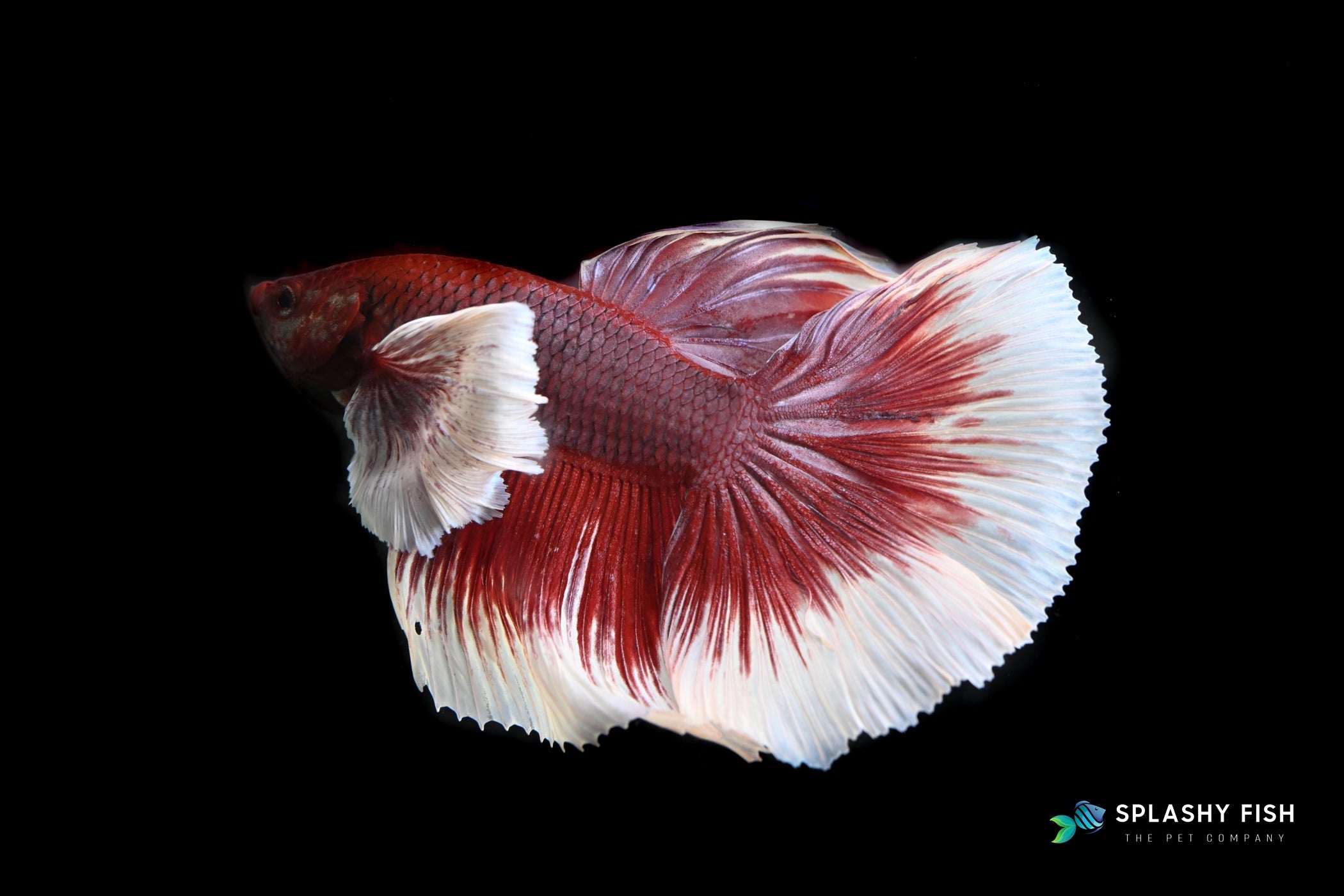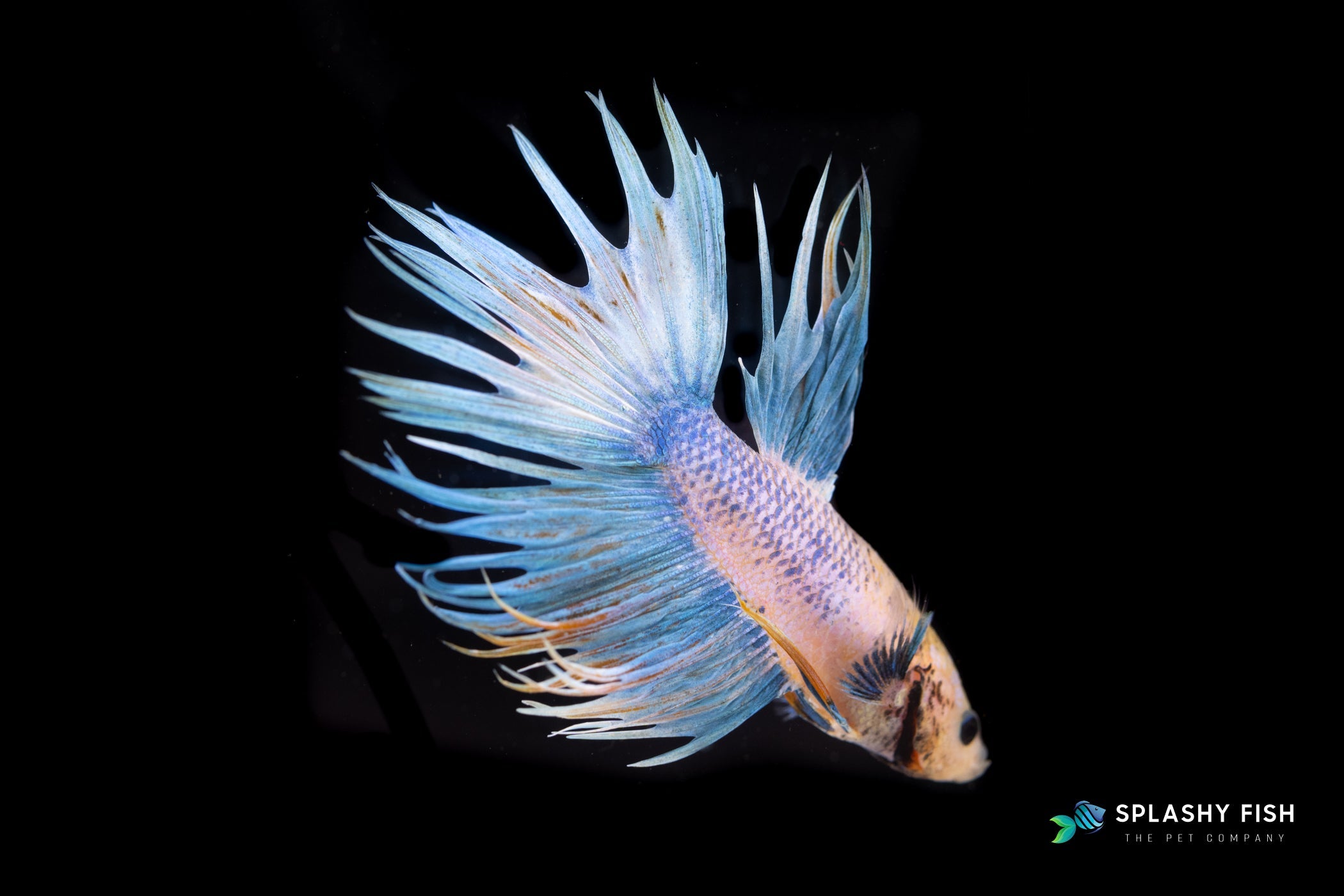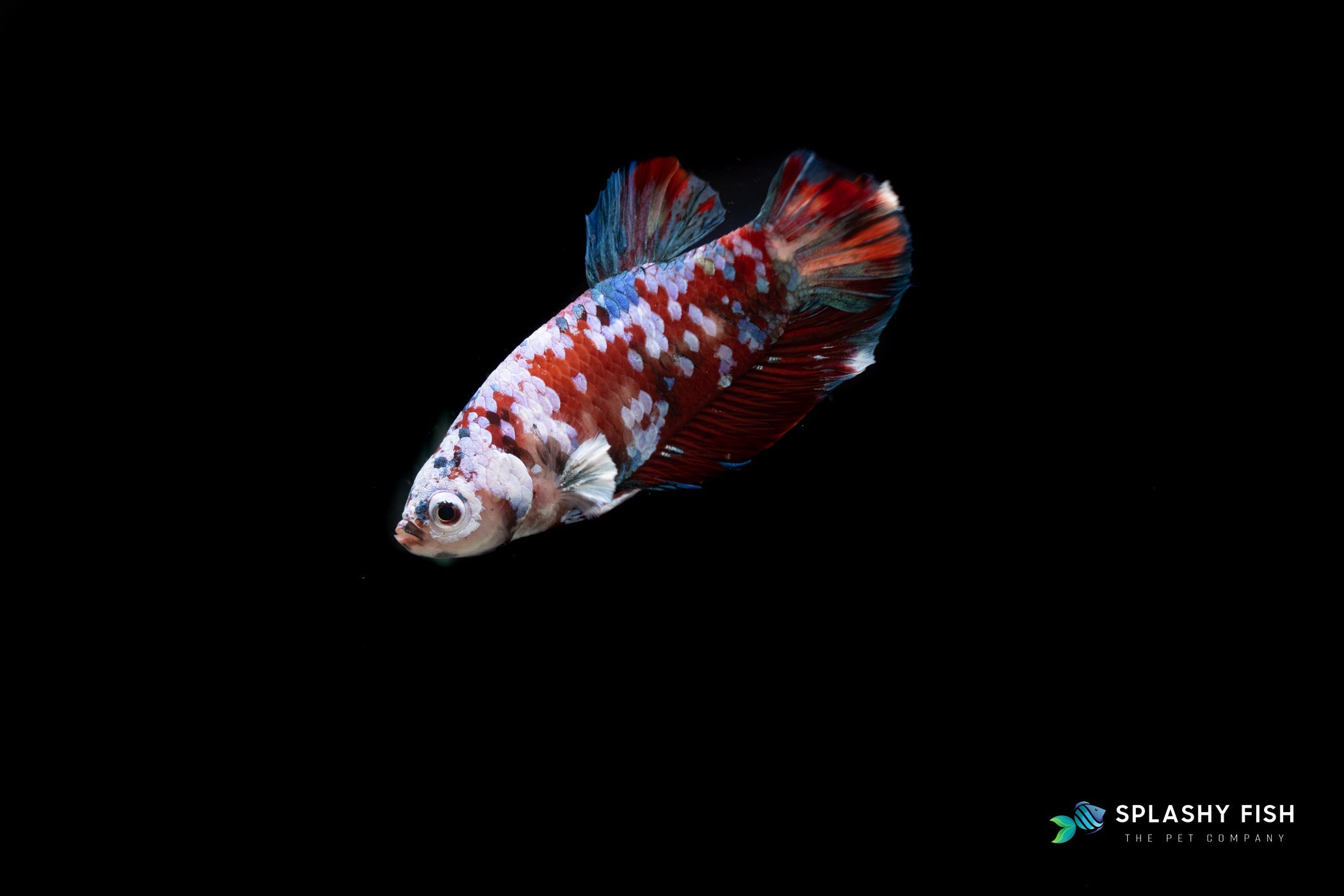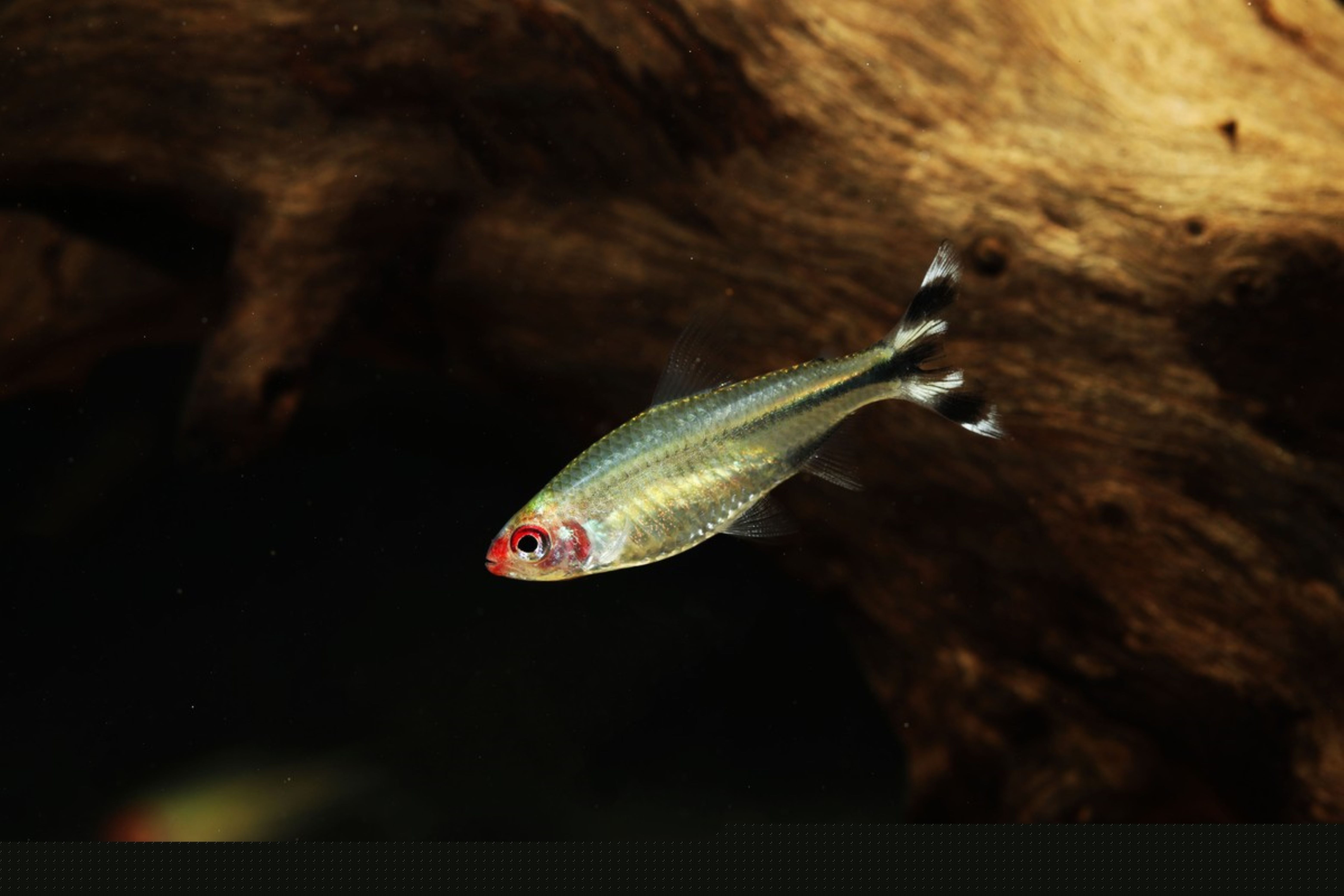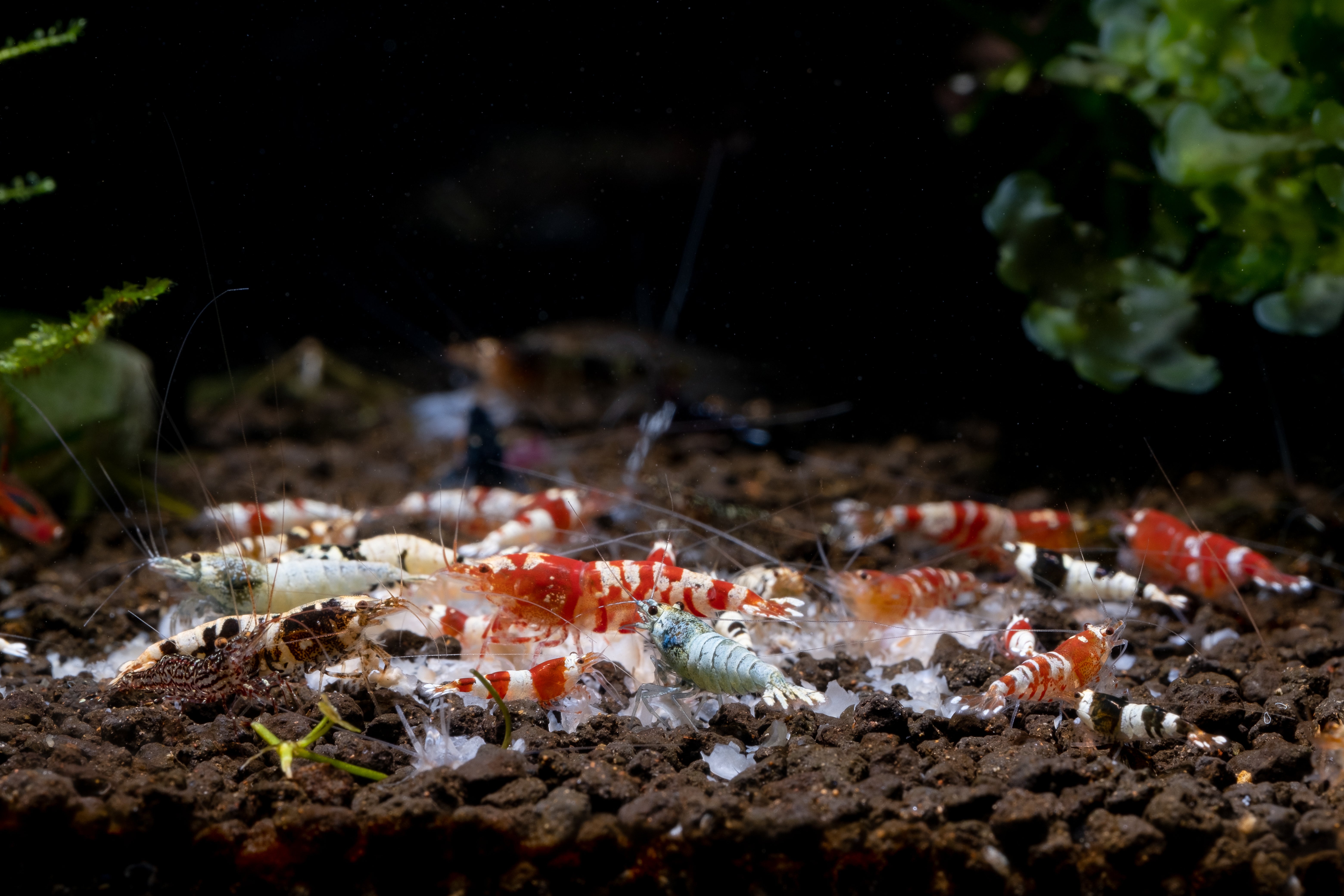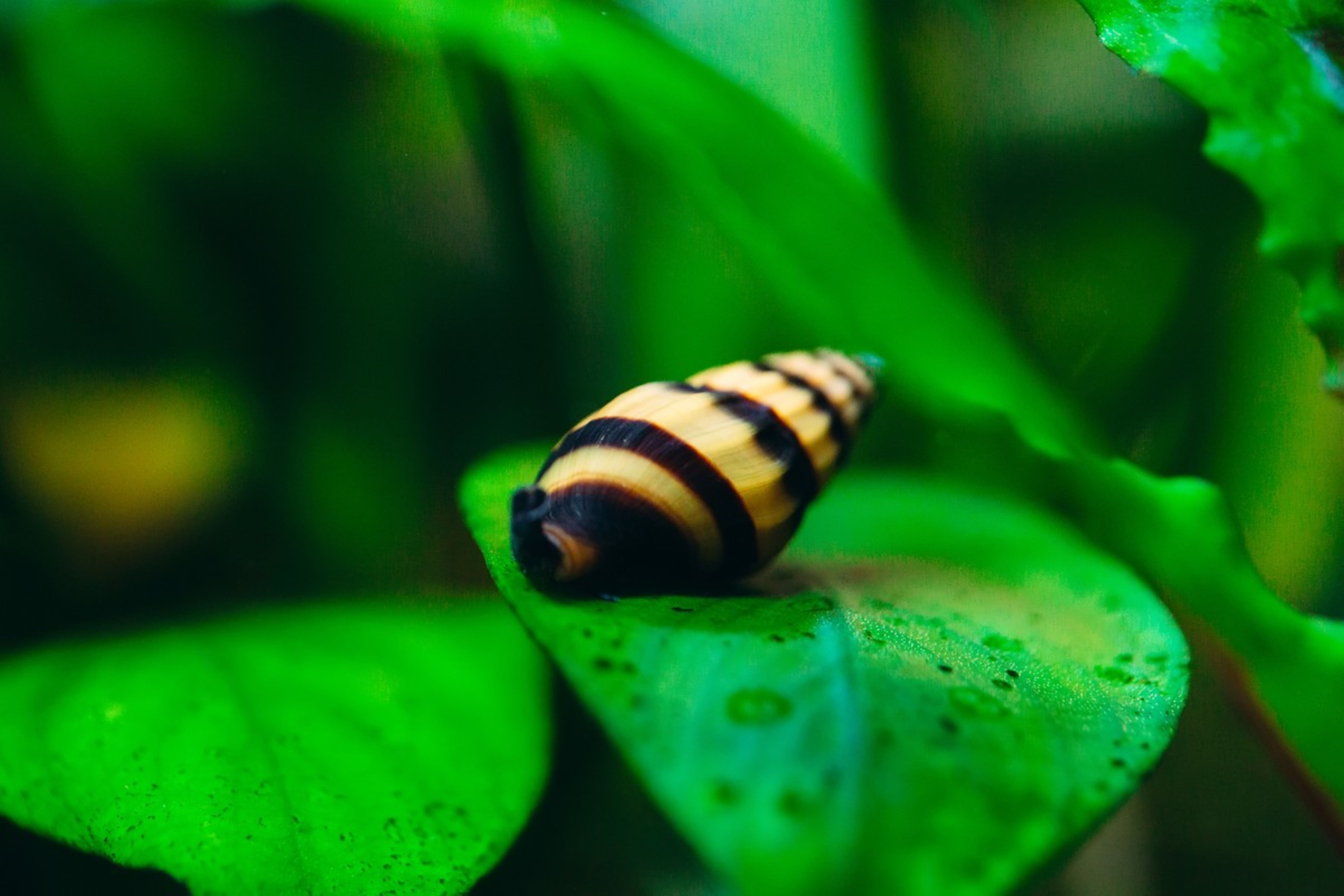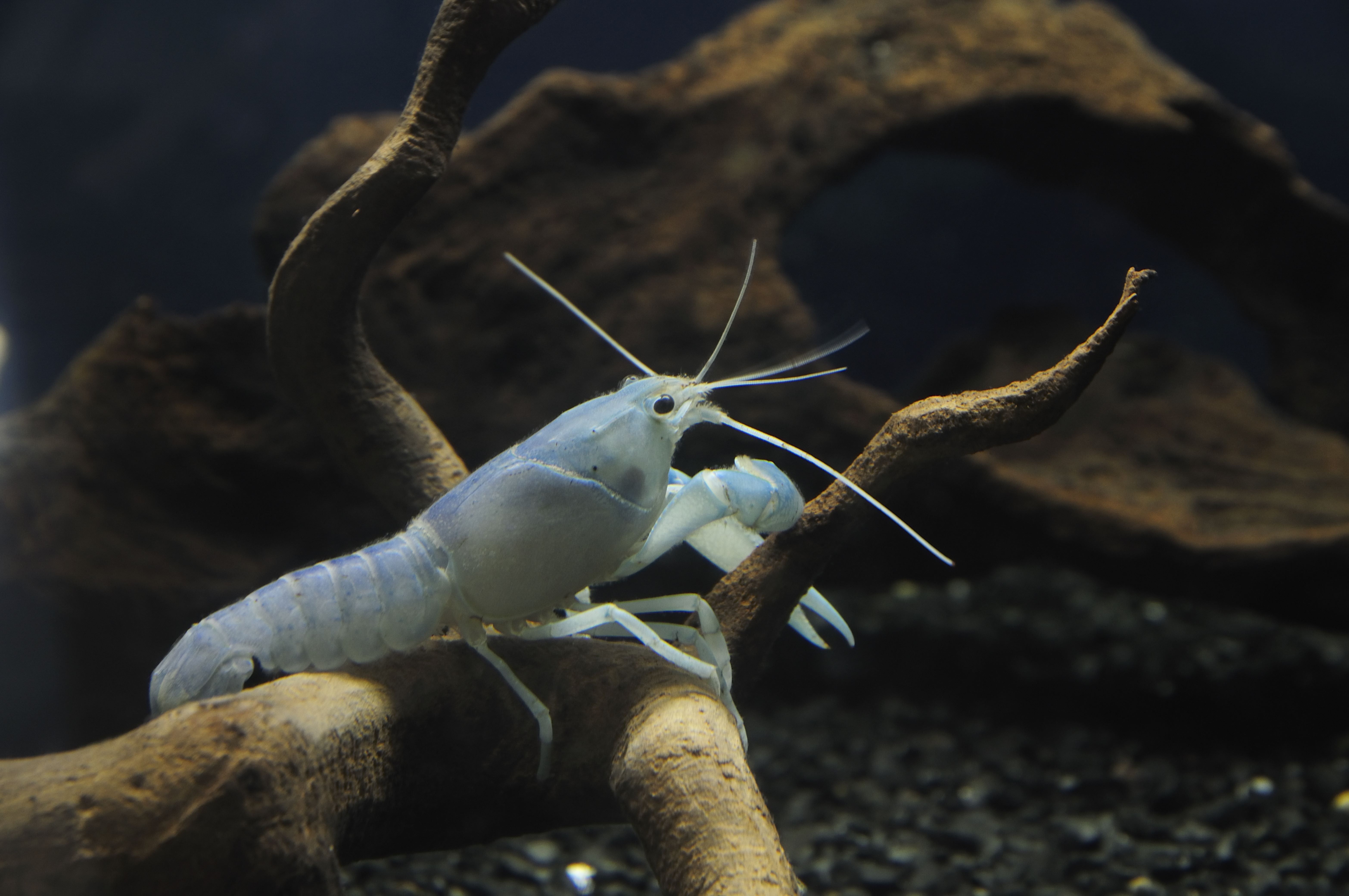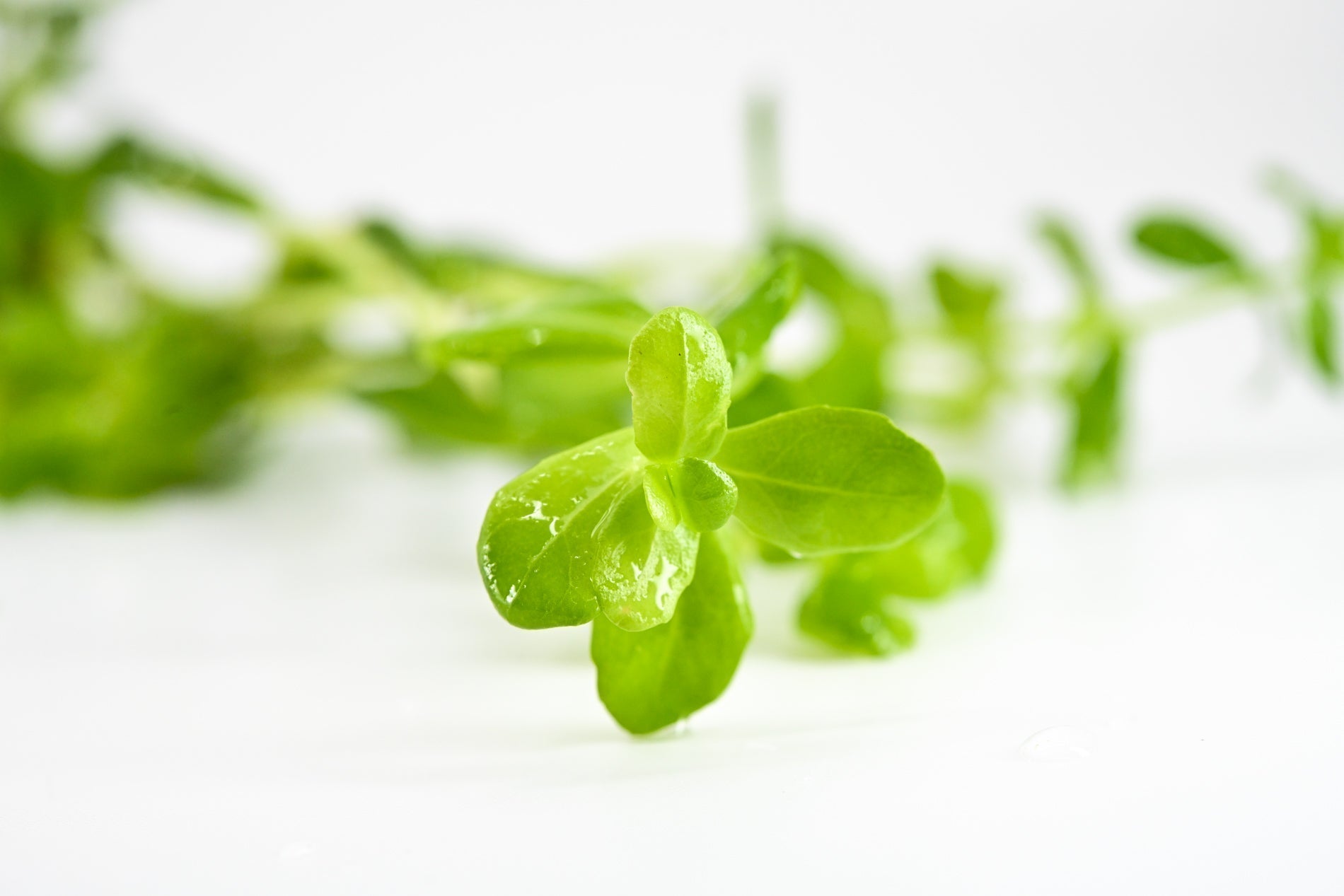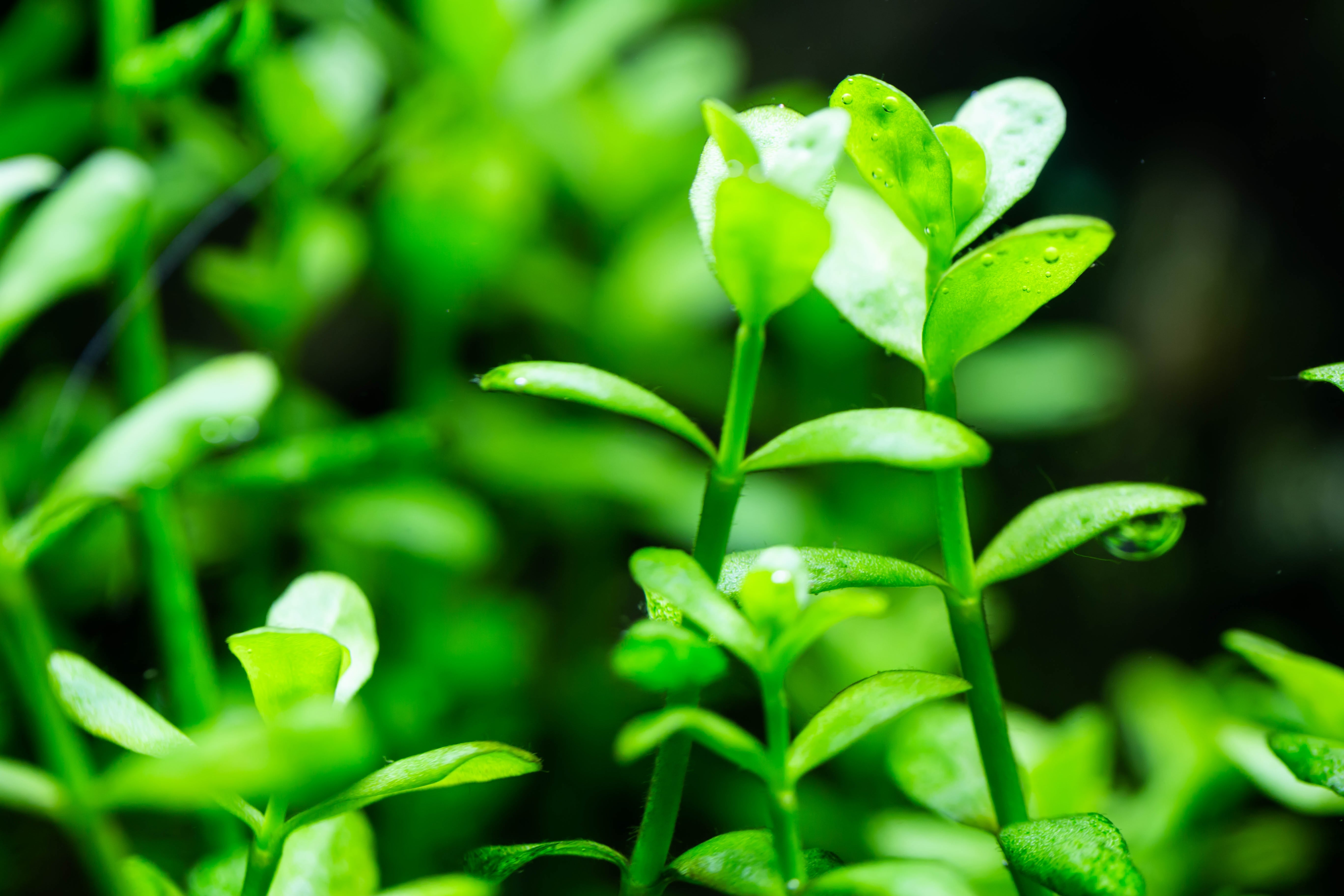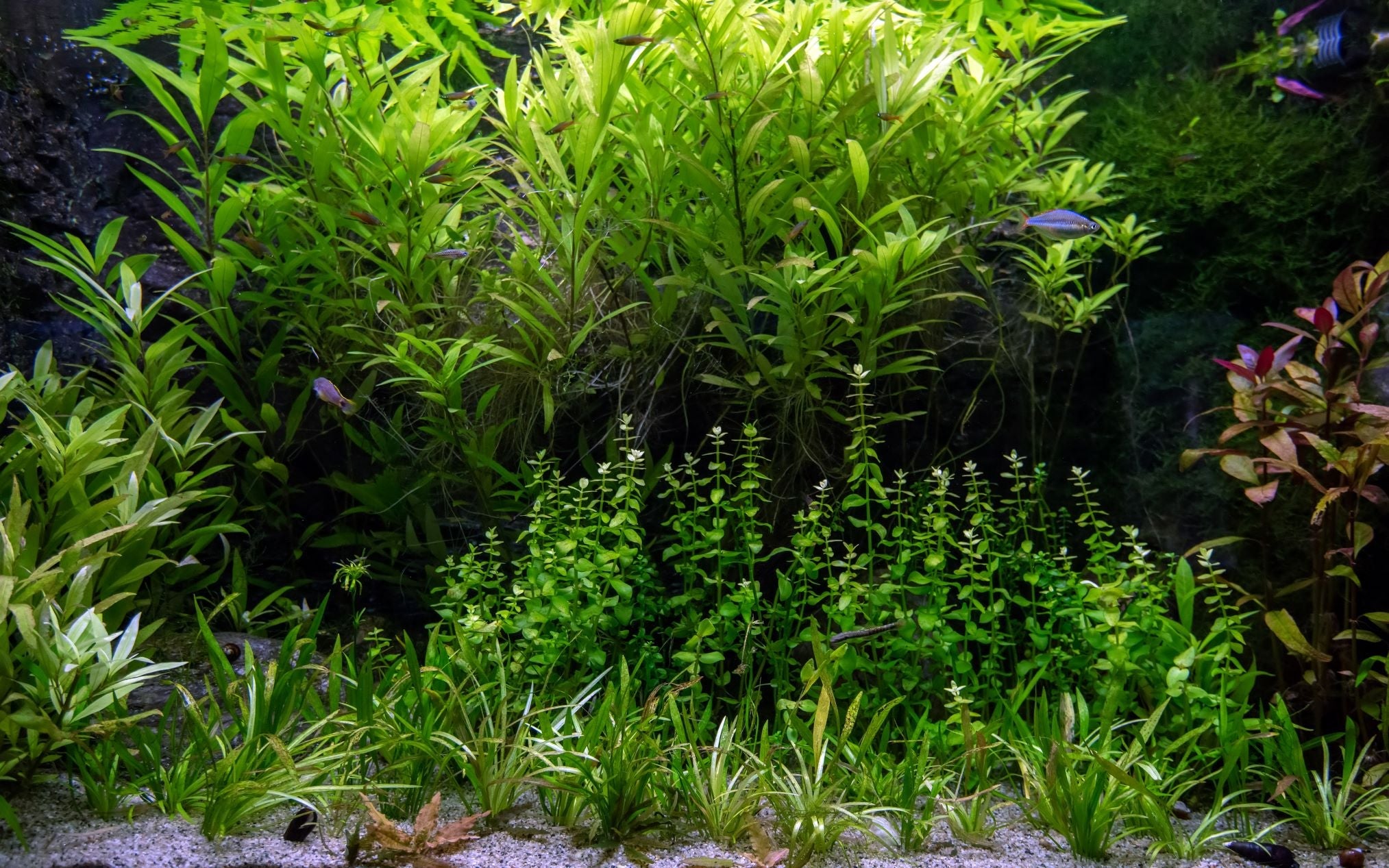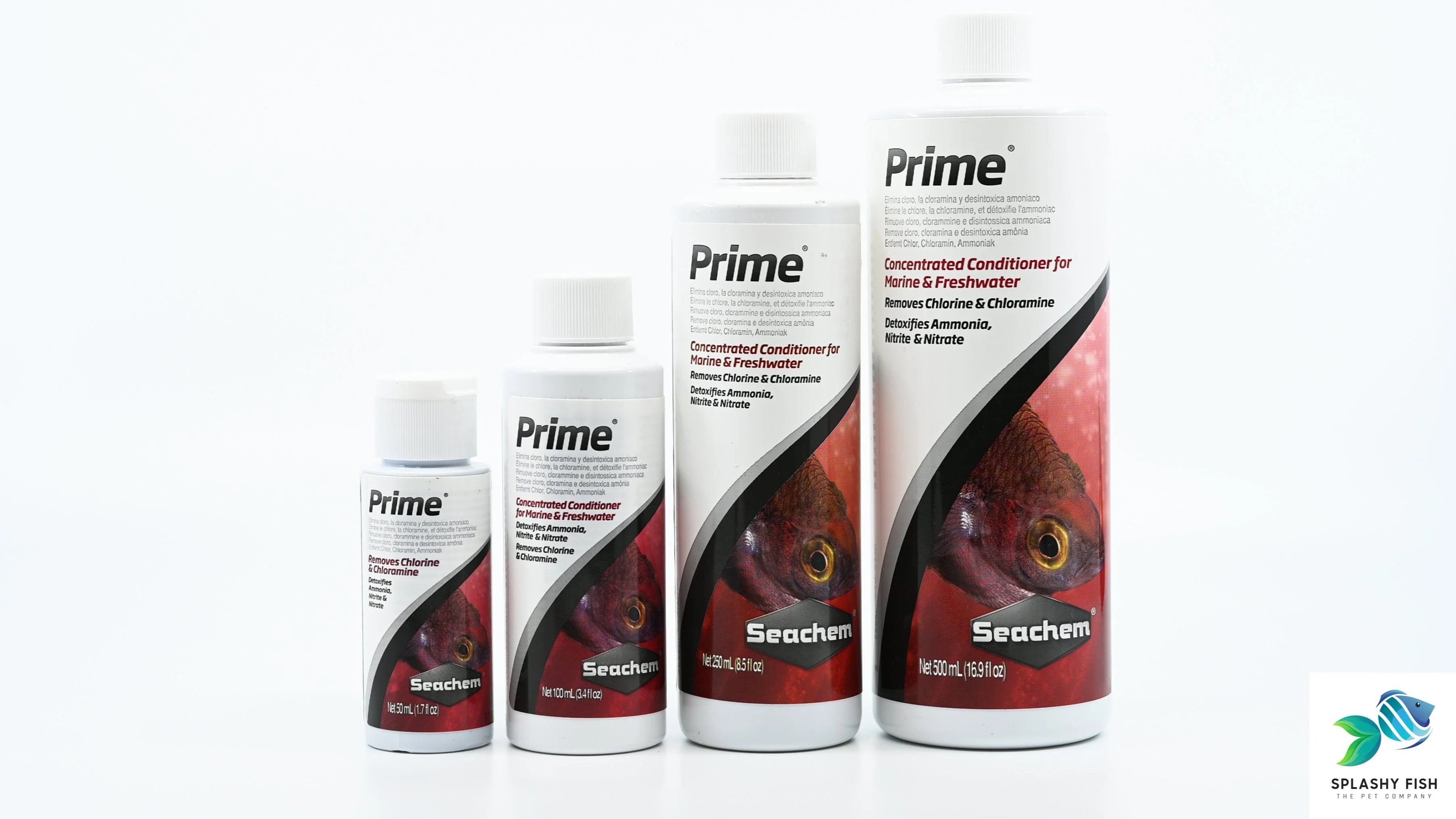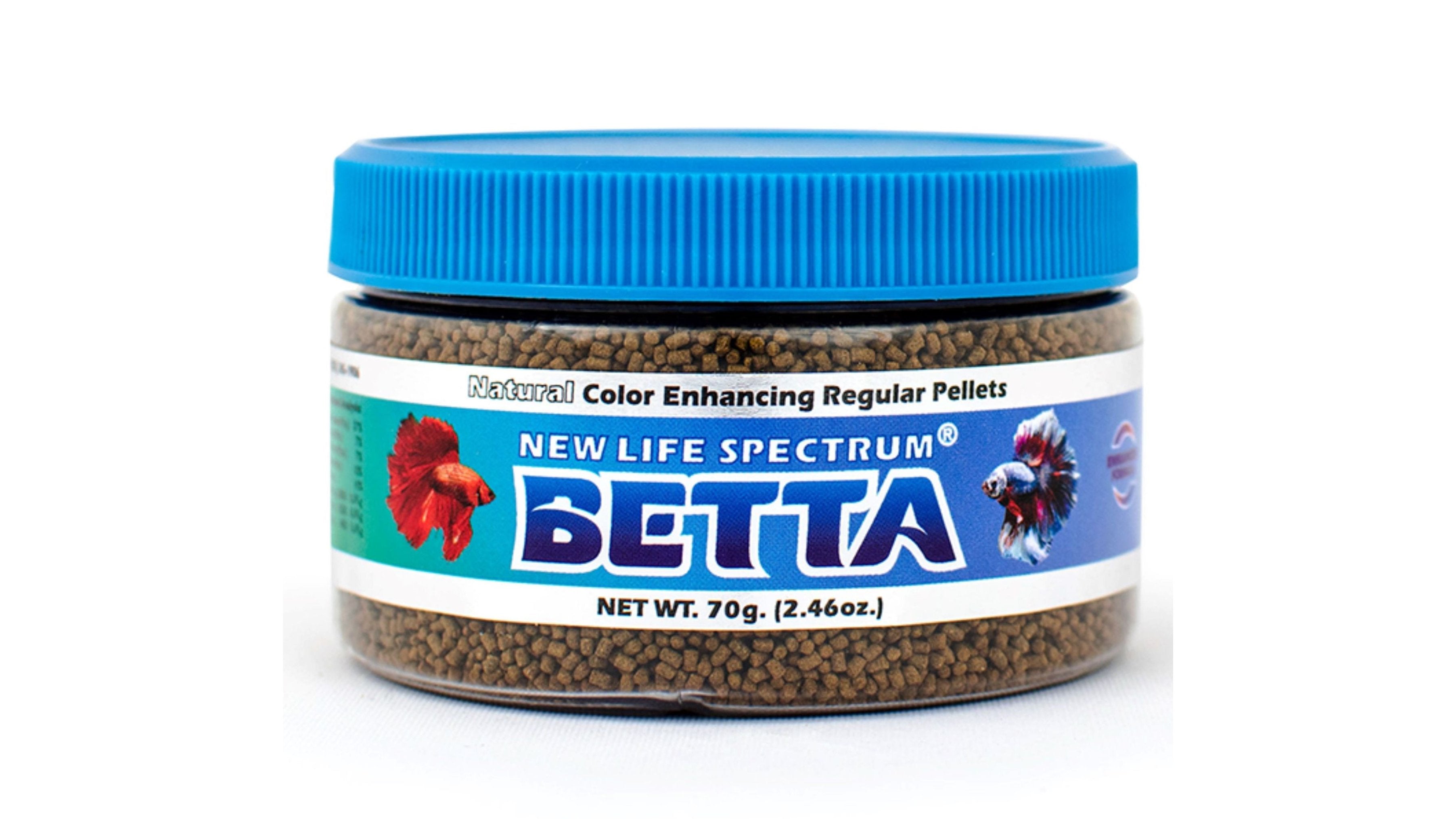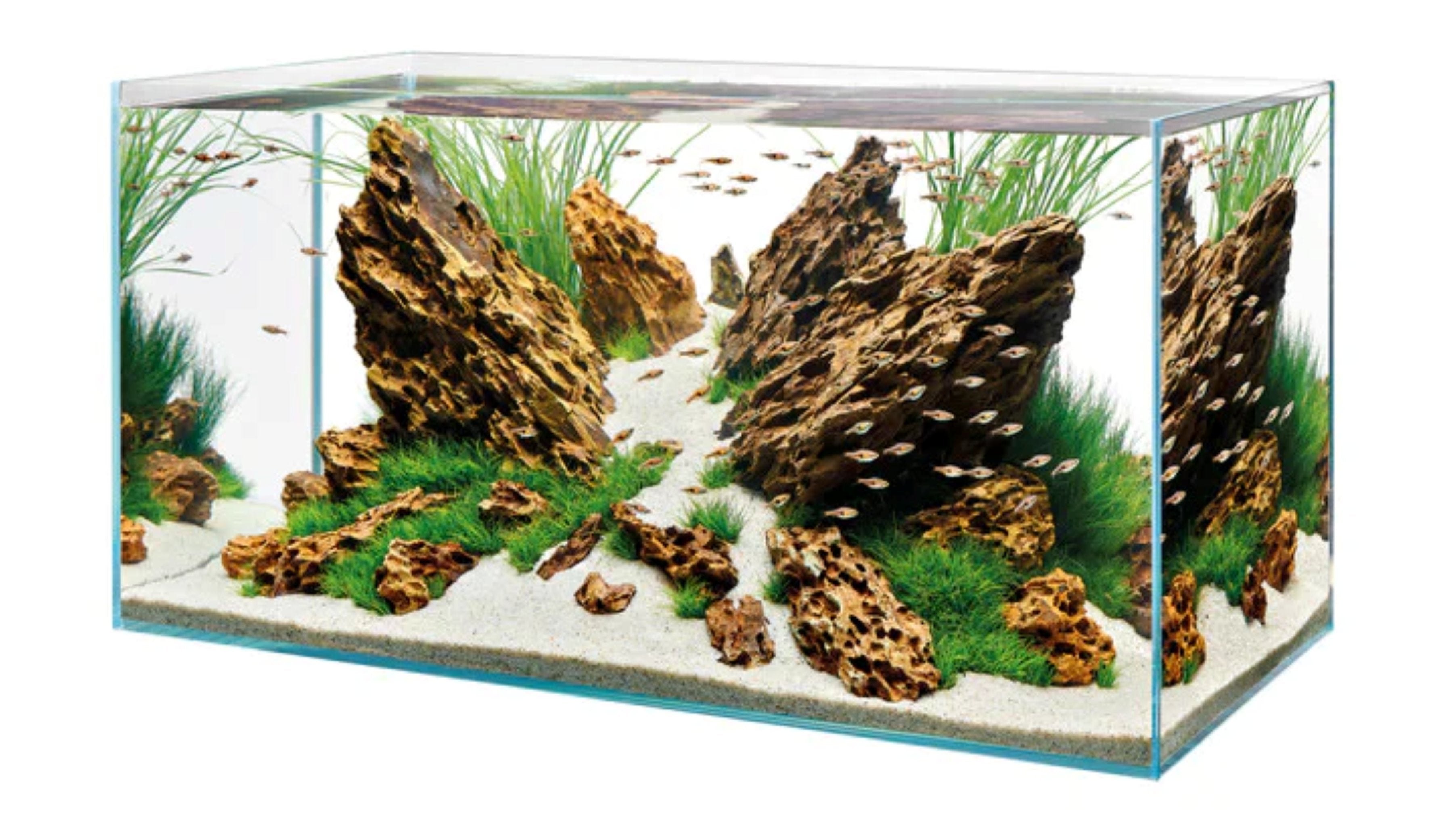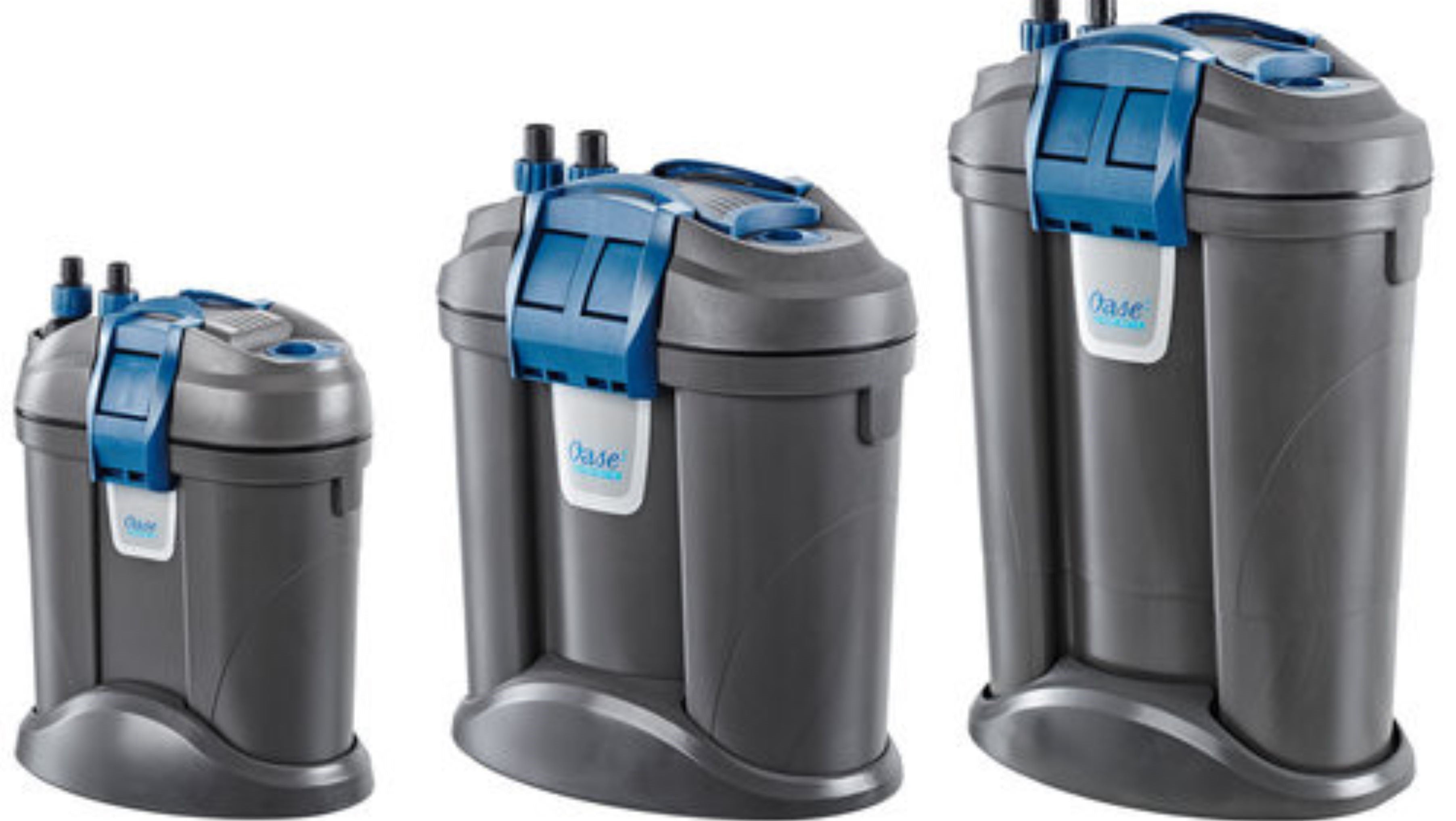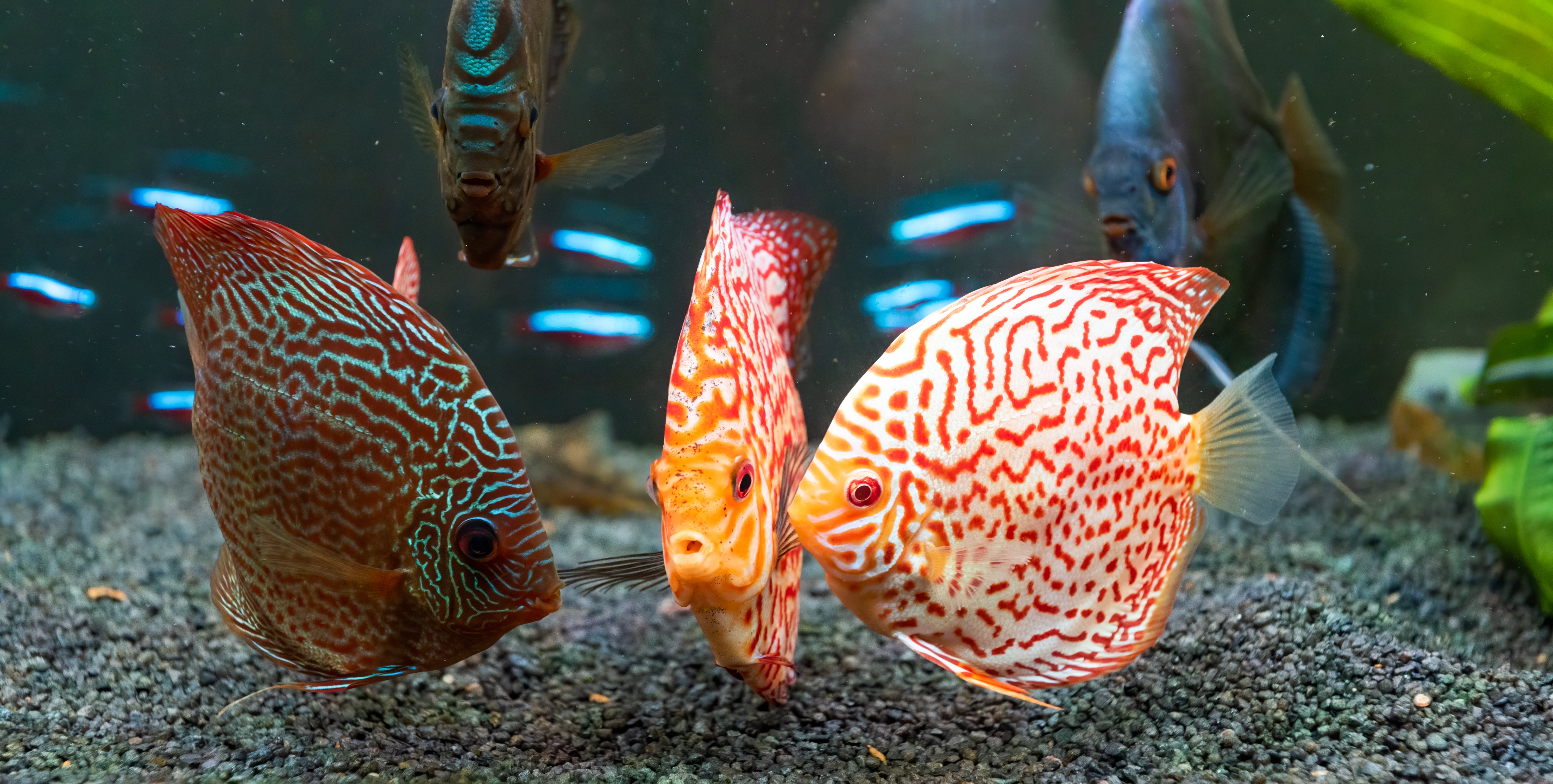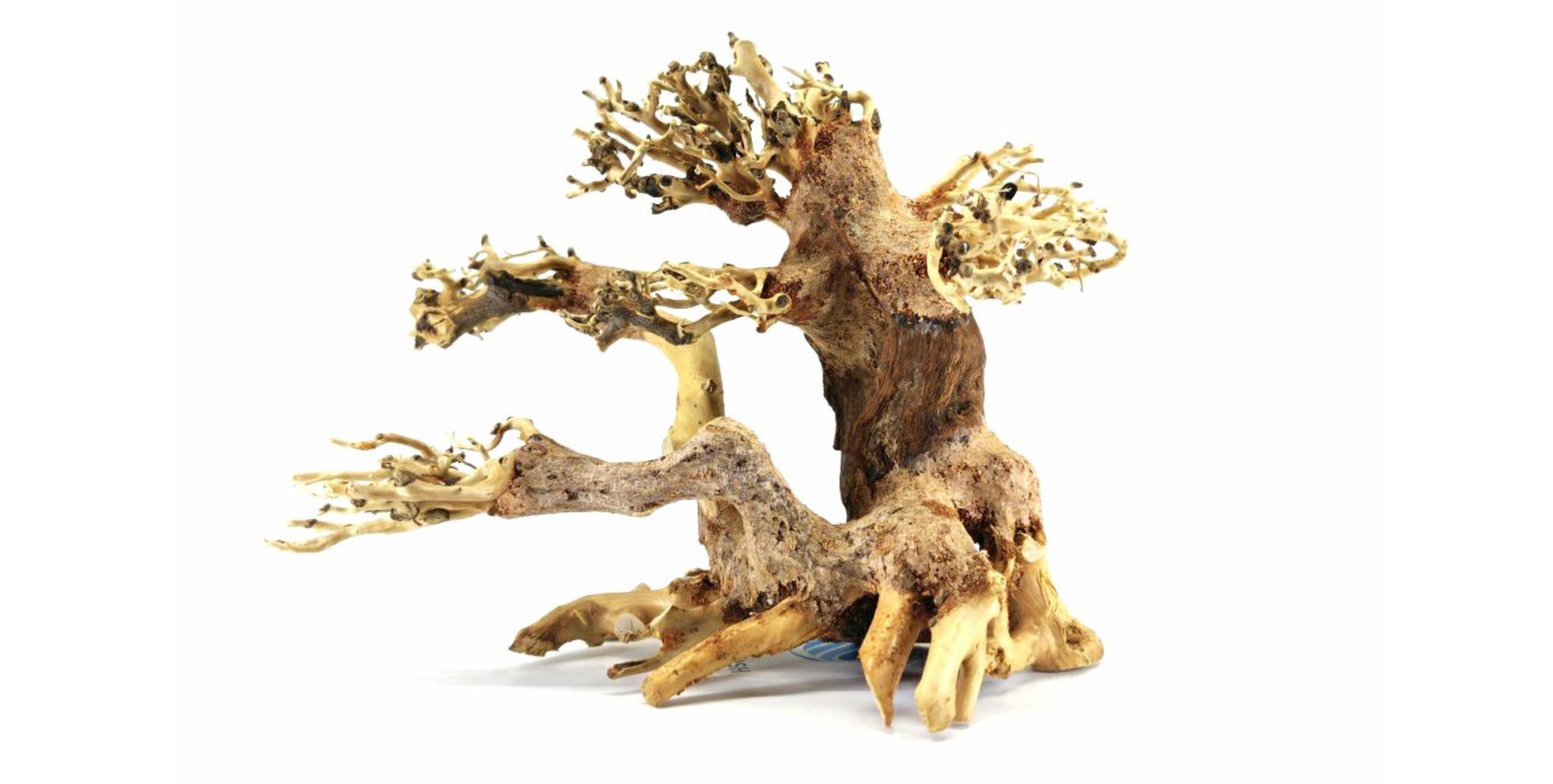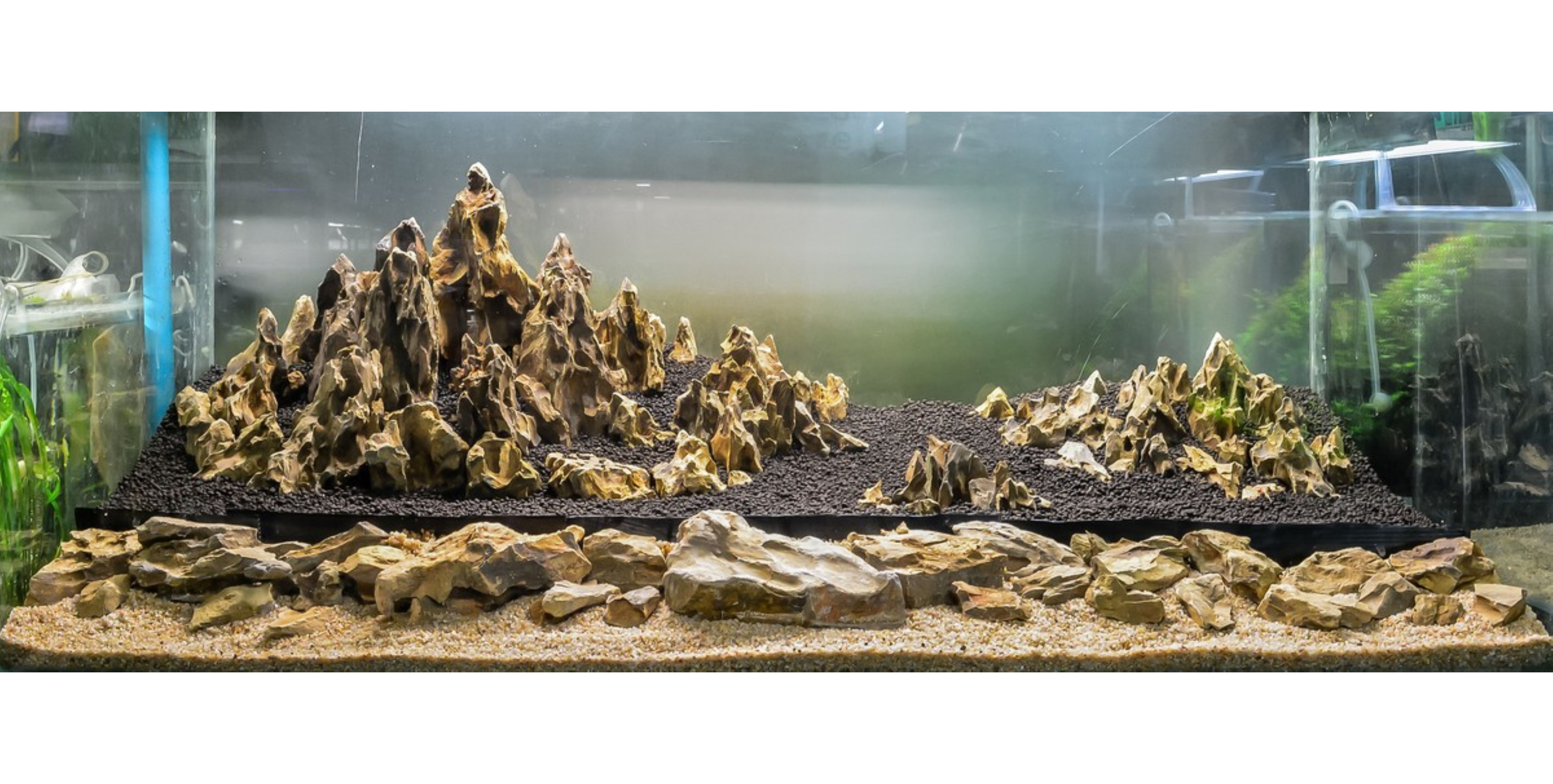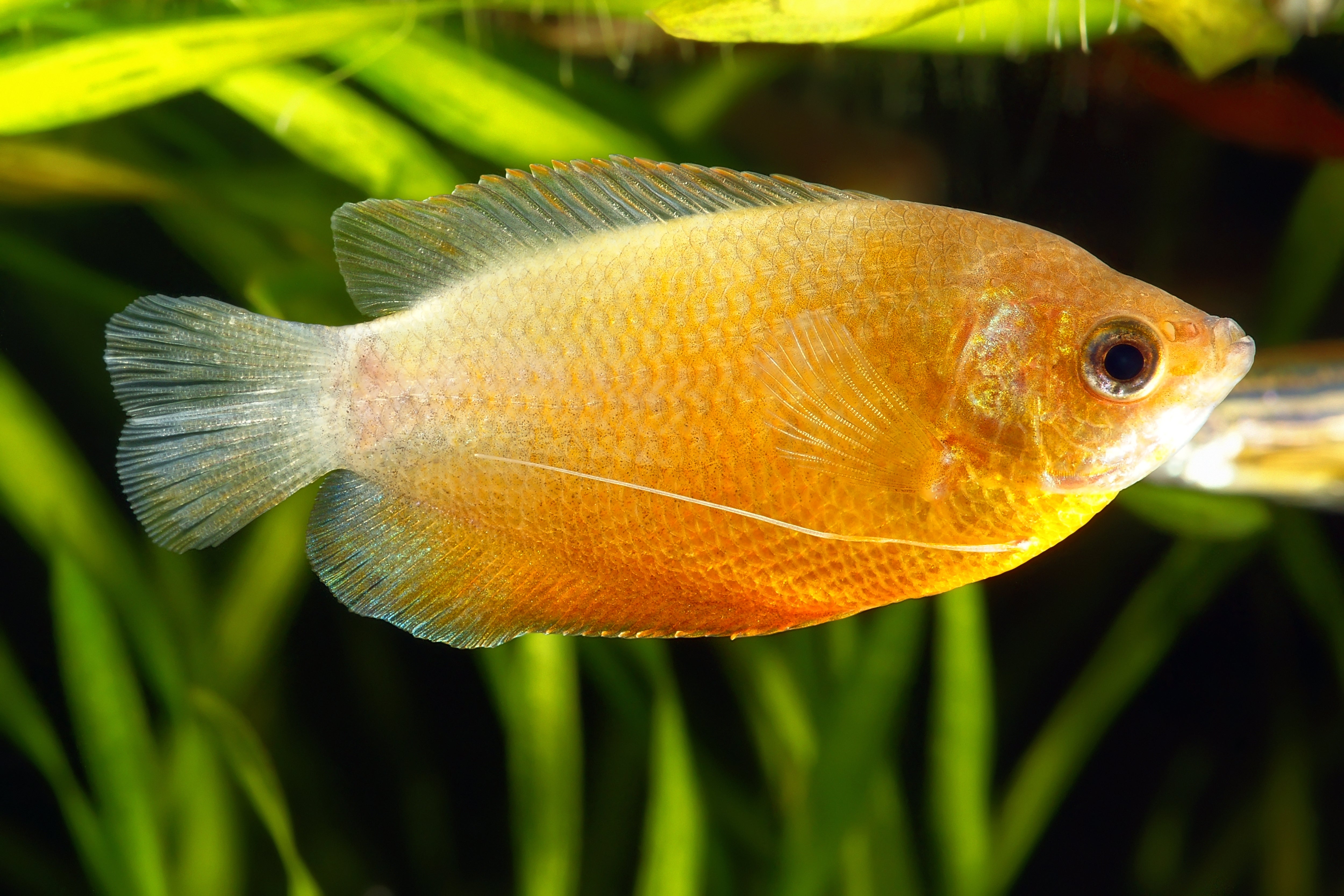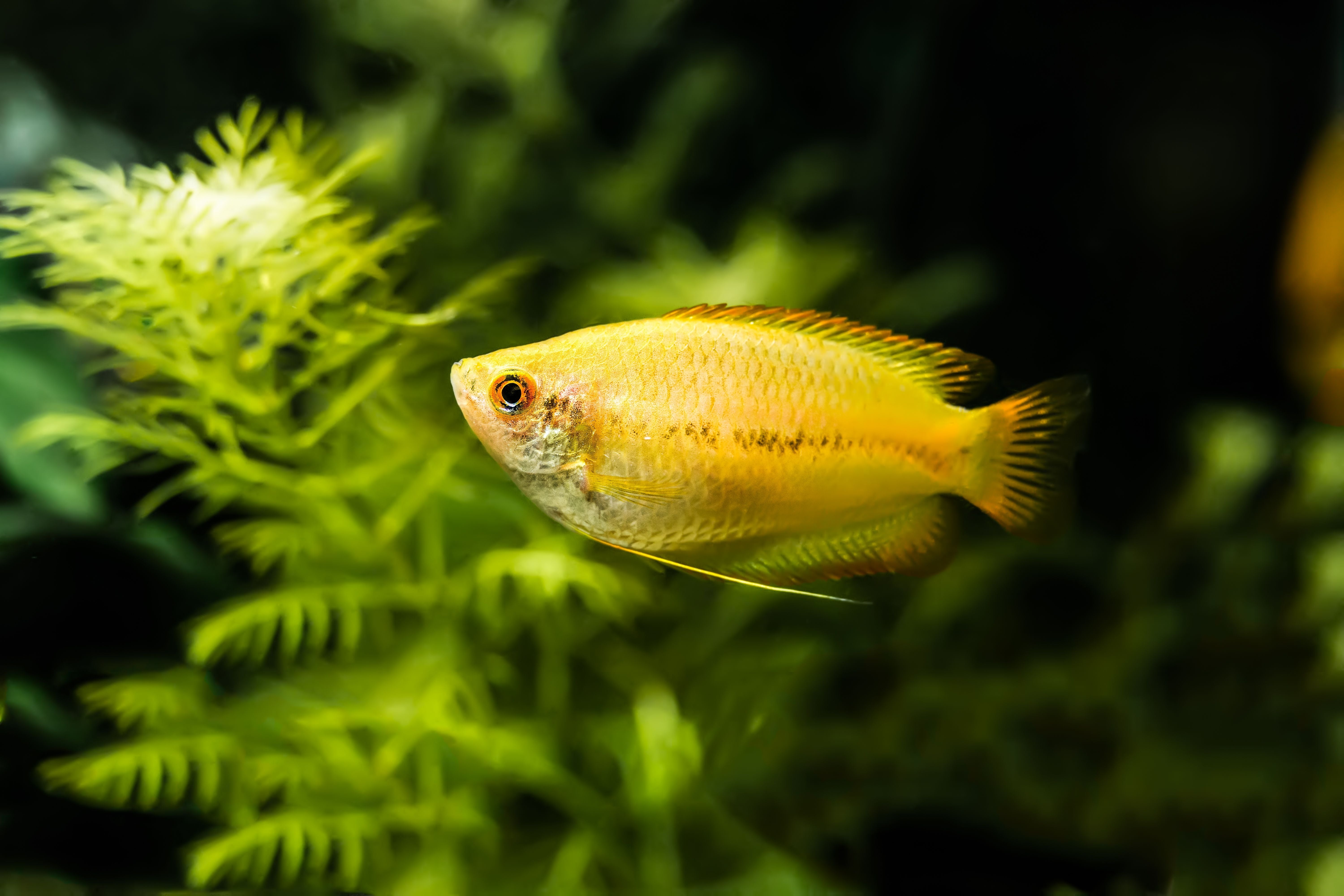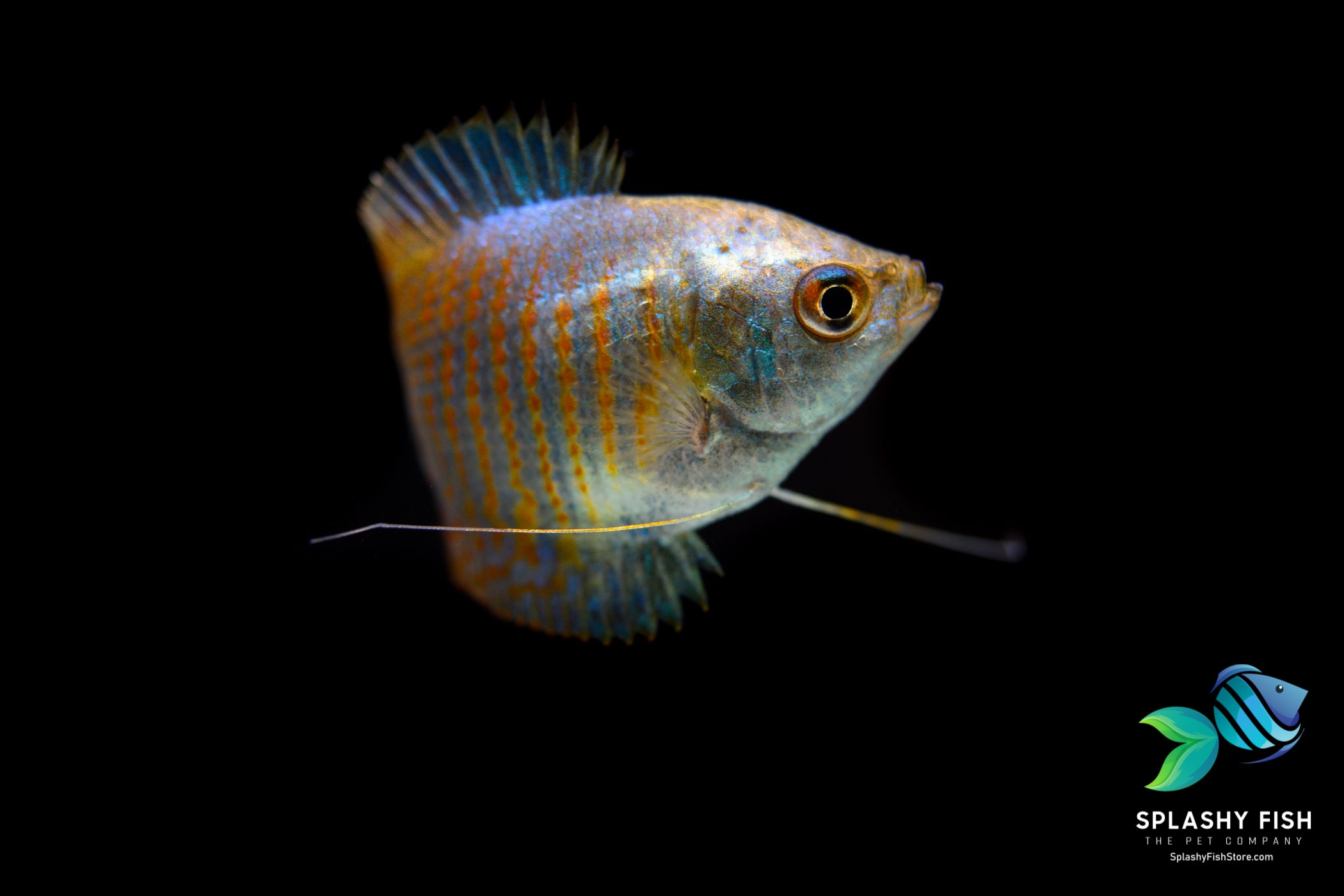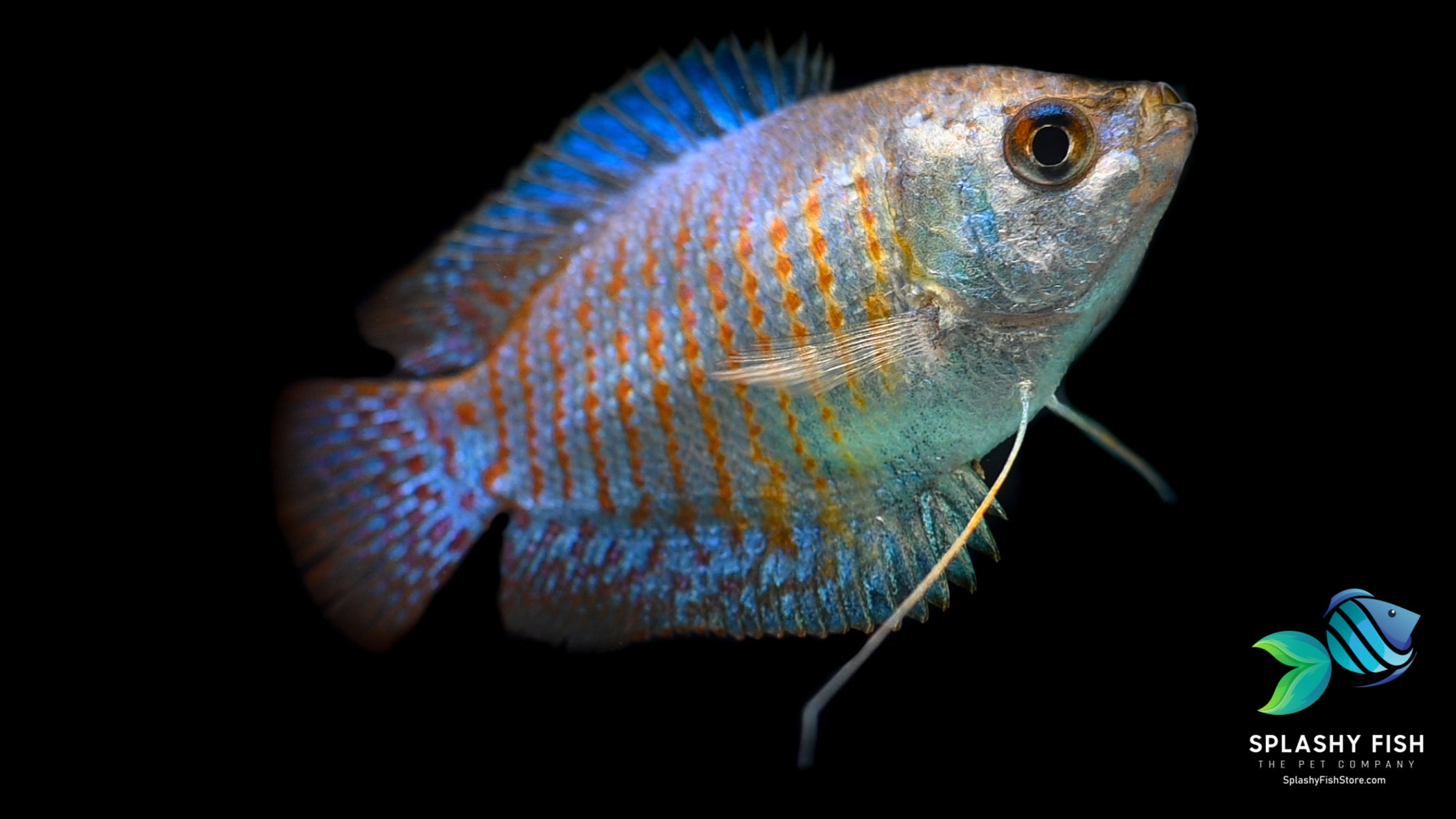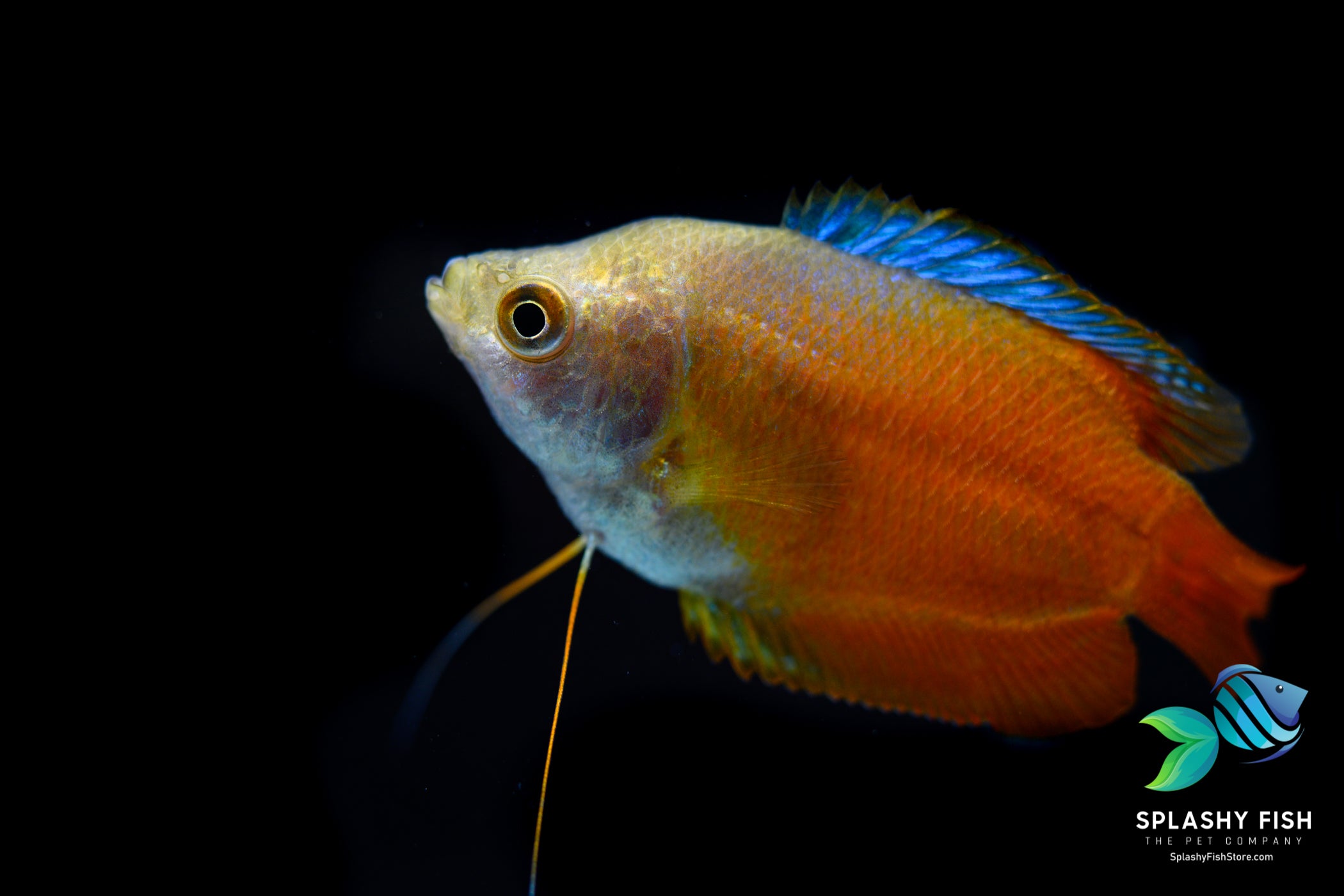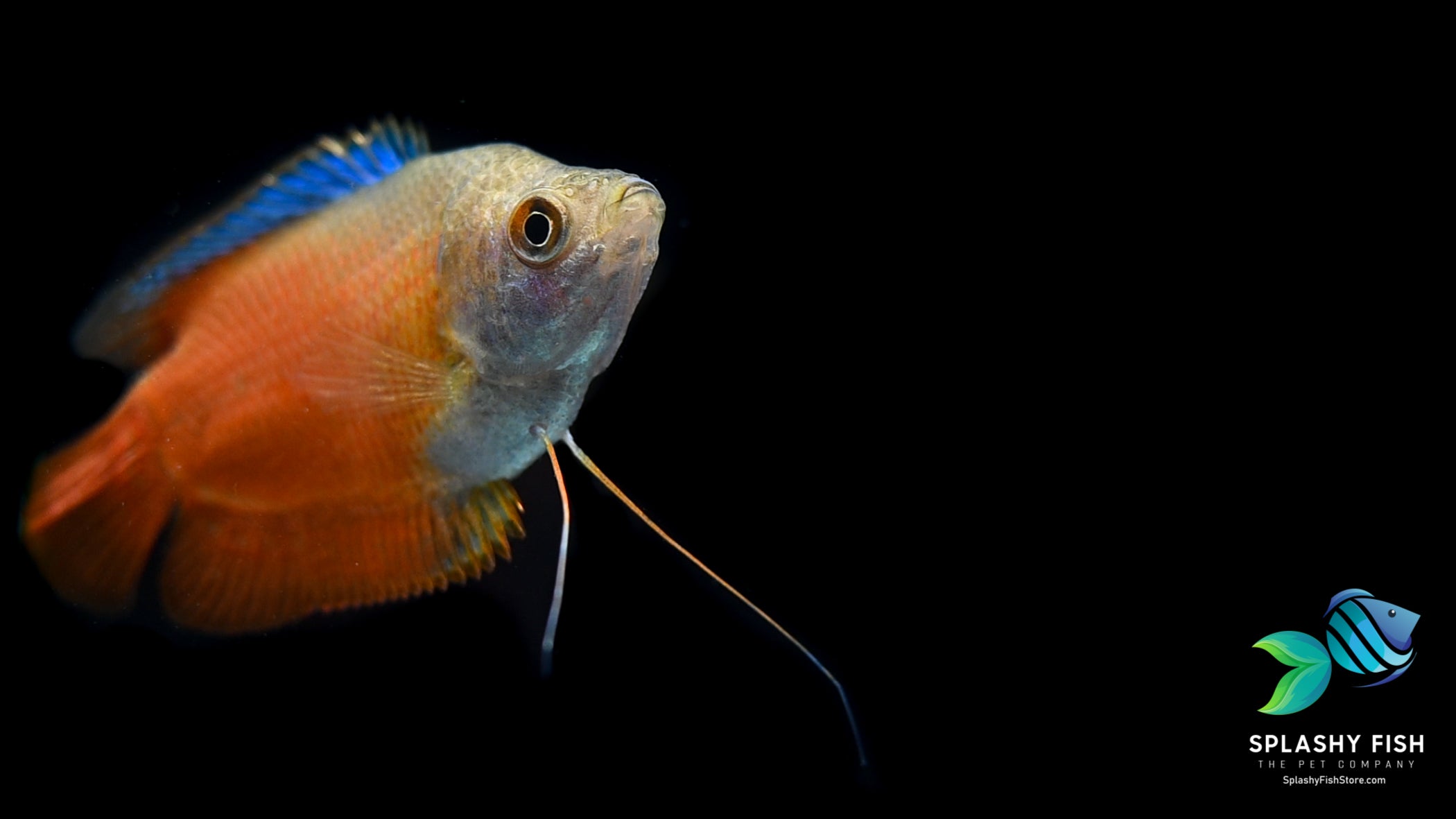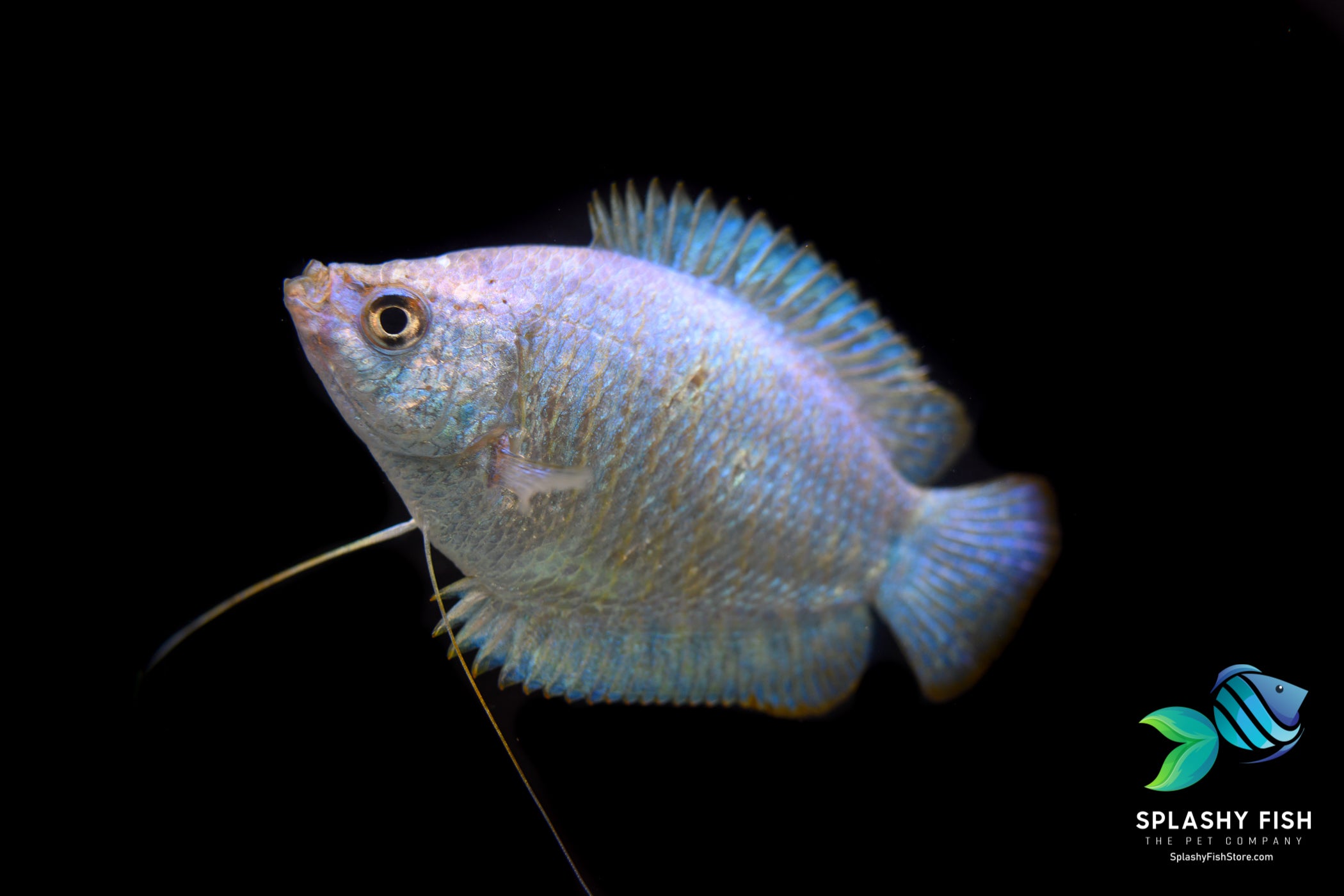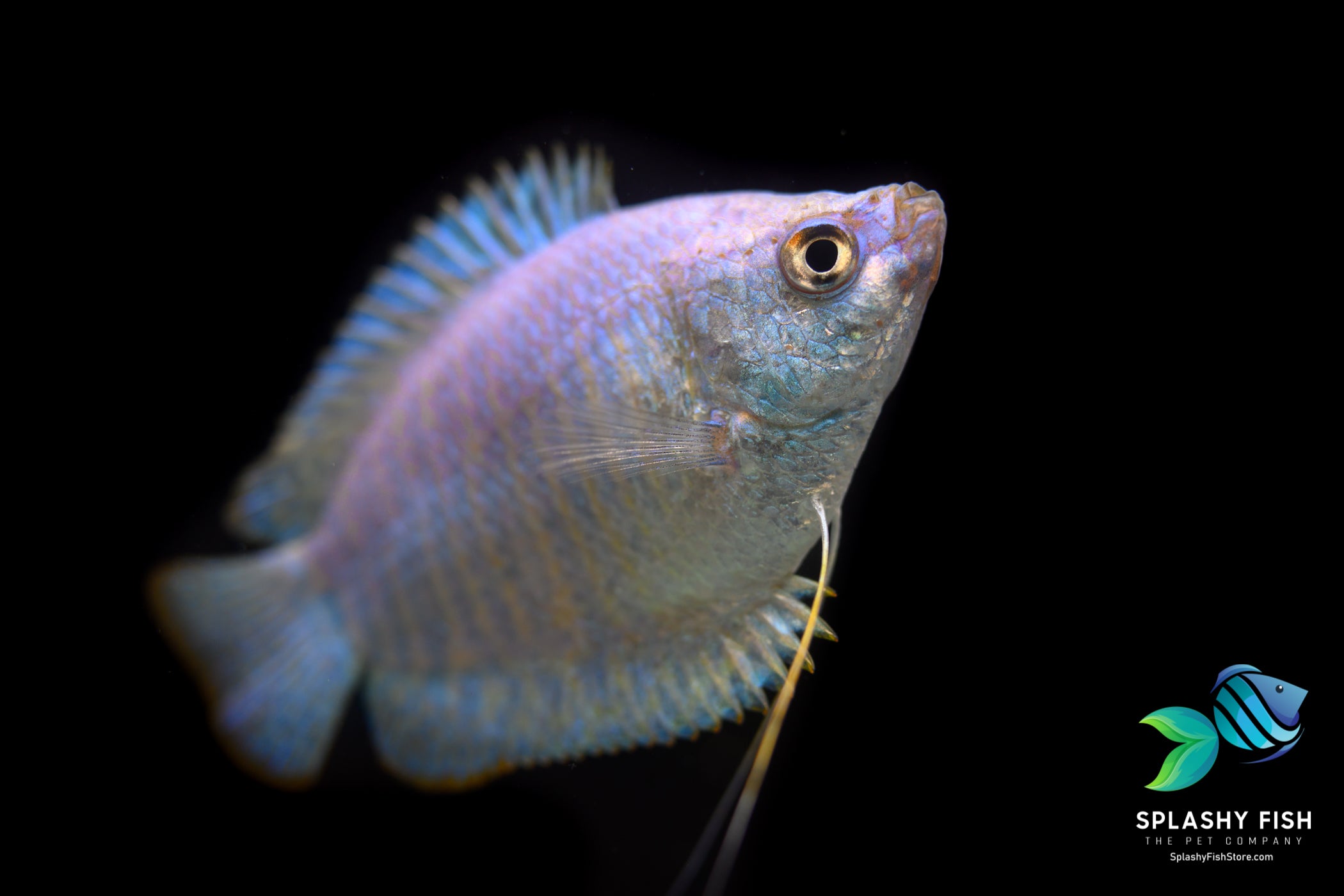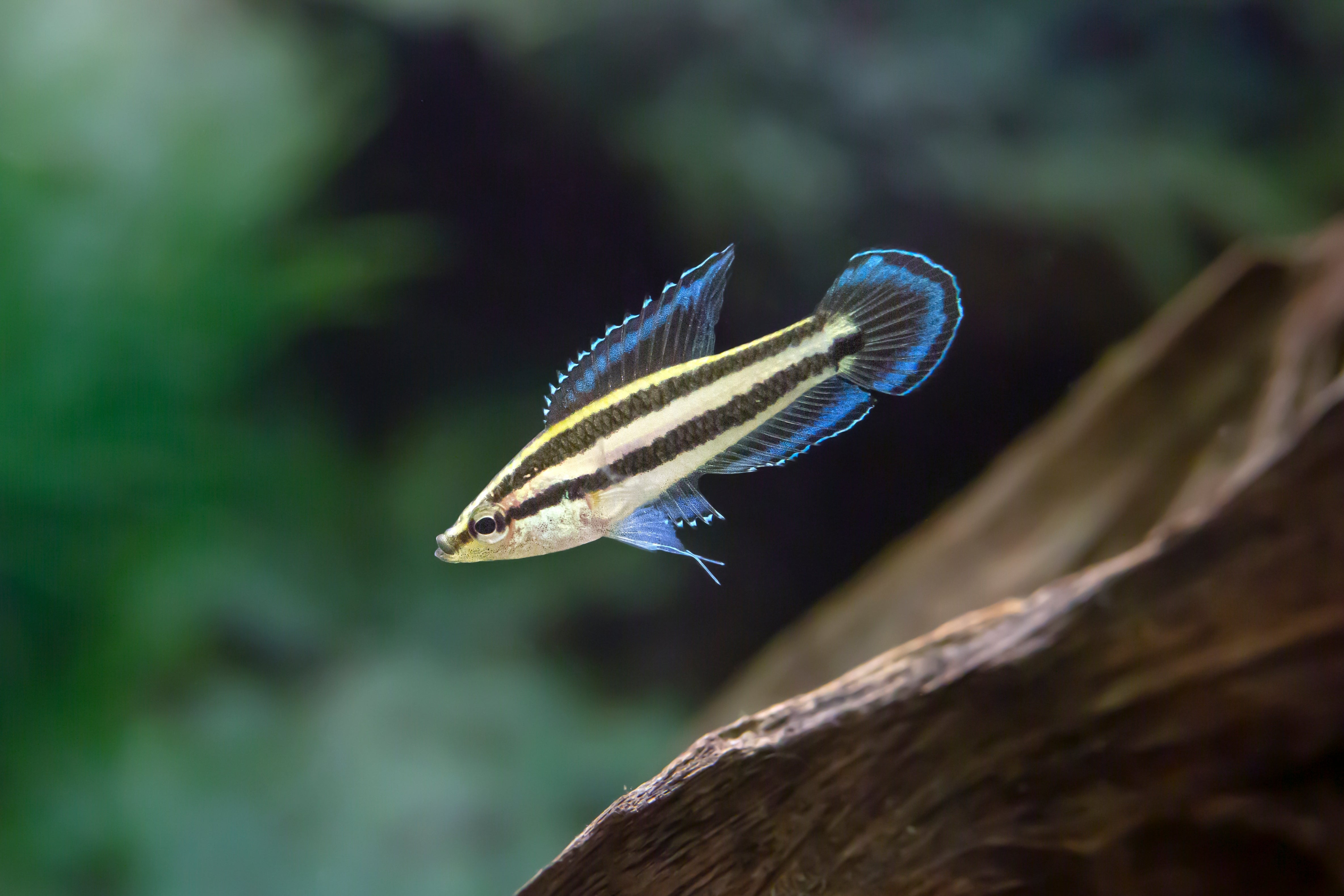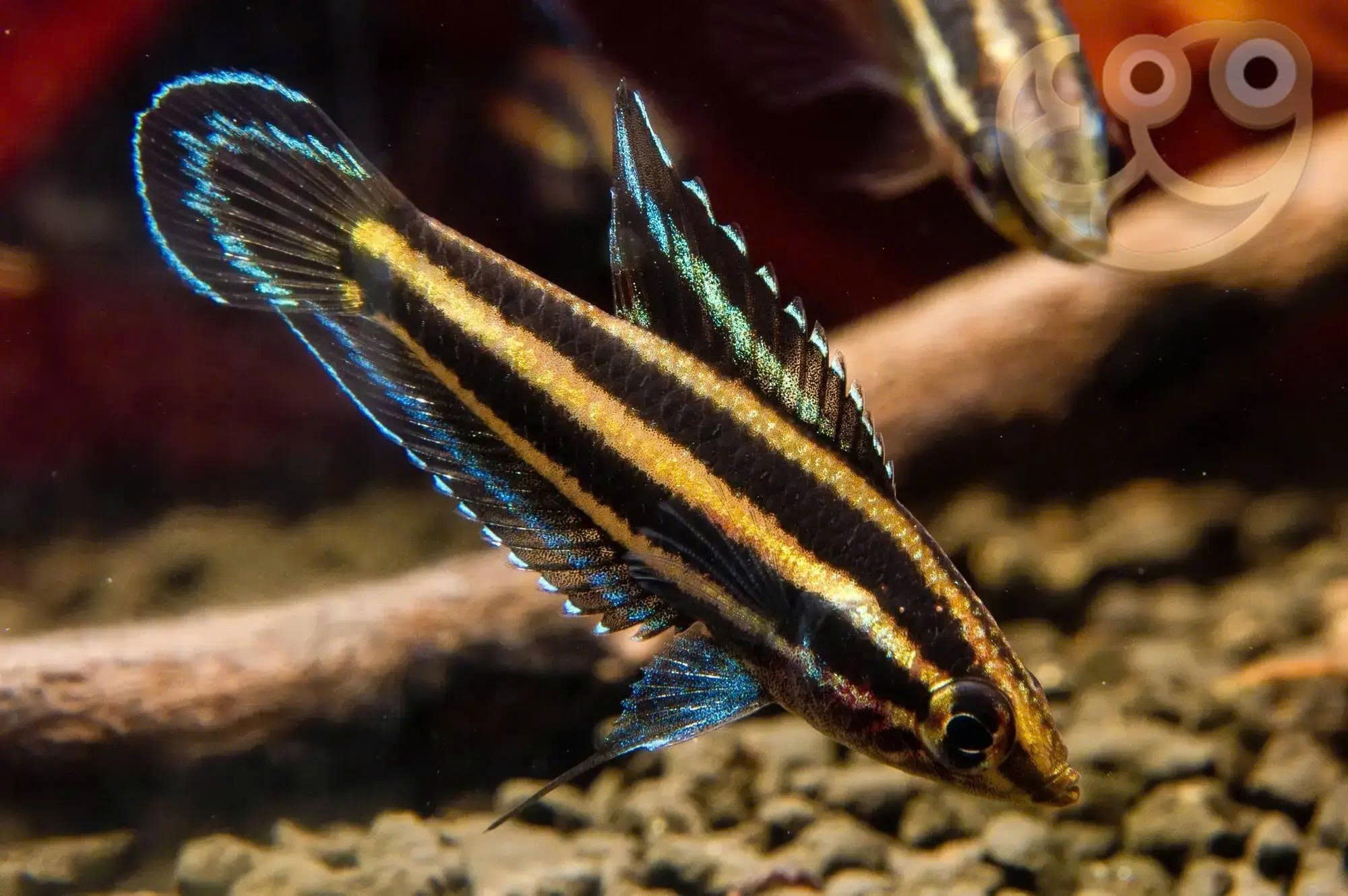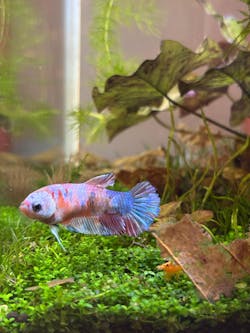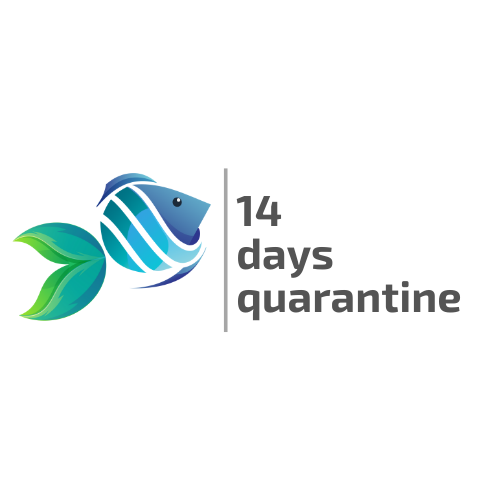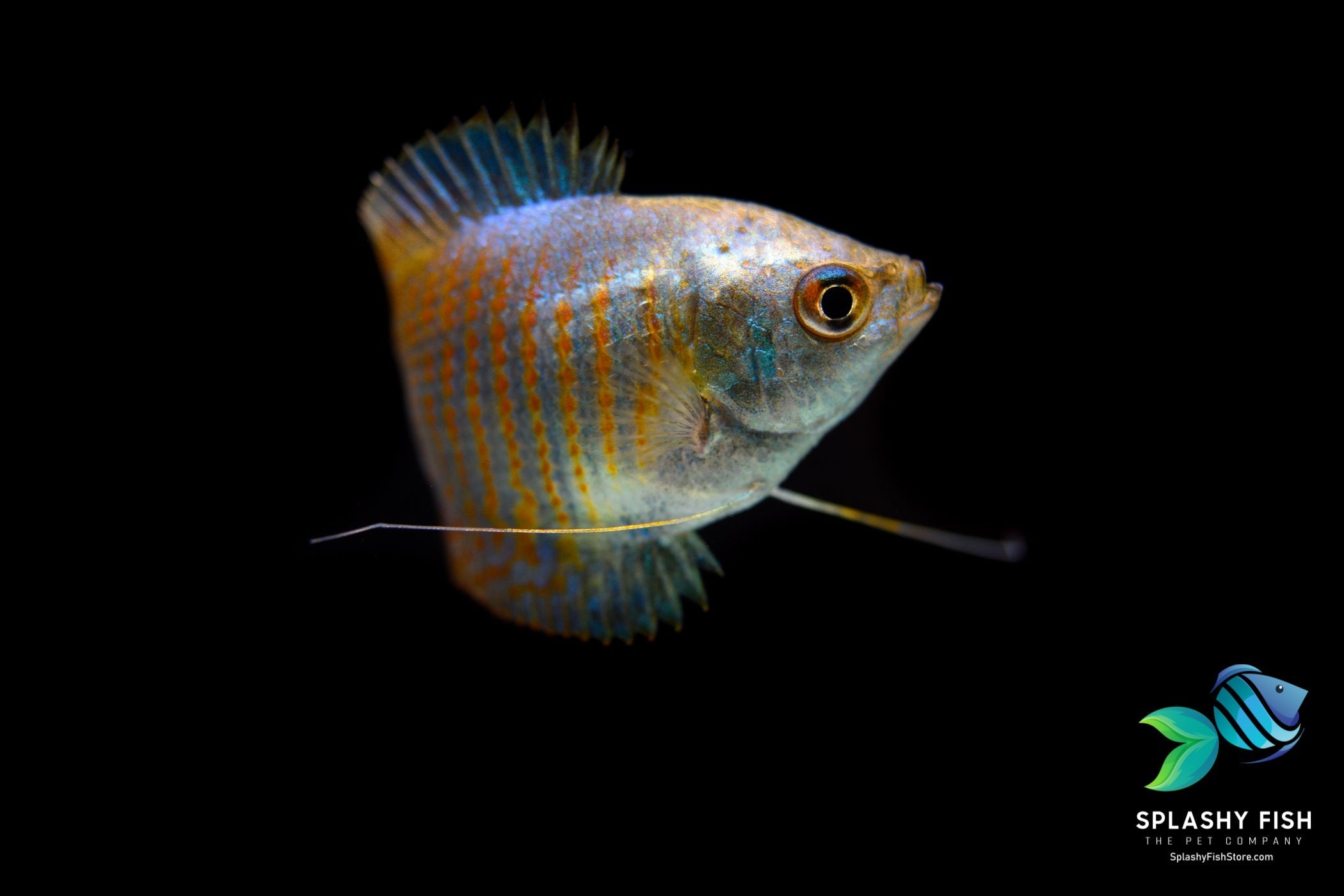
Gourami Fish
Looking for a stunning and peaceful addition to your freshwater aquarium? Gourami fish are a top choice for aquarists who want elegant, colorful fish with unique personalities. Available in various sizes and patterns, gouramis are known for their labyrinth organ, which allows them to breathe air from the surface.
Why Choose Gourami Fish for Your Aquarium?
- Beautiful Colors & Patterns: From shimmering blues and fiery reds to striking golds, there are many gourami types to choose from.
- Peaceful & Easygoing: Most gourami species are calm, making them excellent tank mates for other community fish.
- Hardy & Adaptable: Gourami fish thrive in a range of water conditions and are relatively easy to care for.
- Unique Breathing Ability: As labyrinth fish, gouramis can take in oxygen directly from the air, allowing them to survive in lower-oxygen environments.
Popular Gourami Fish Types
Explore our diverse selection of gourami species to find the perfect match for your aquarium:
- Dwarf Gourami (Trichogaster lalius): A small, vibrant fish available in colors like neon blue and flame red.
- Pearl Gourami (Trichopodus leerii): Recognized for its pearly sheen and elegant appearance, ideal for planted tanks.
- Honey Gourami (Trichogaster chuna): A peaceful, small species with a golden-orange hue, perfect for nano aquariums.
- Three-Spot Gourami (Trichopodus trichopterus): A hardy species that comes in variations like Blue, Gold, and Opaline Gouramis.
- Kissing Gourami (Helostoma temminkii): Named for its unique “kissing” behavior, this species adds character to larger aquariums.
Tips for Keeping Gourami Fish
- Tank Size & Setup: Most gourami types require a minimum of 10-30 gallons, depending on the species.
- Water Parameters: Keep the temperature between 74-82°F (23-28°C) with a pH of 6.0-7.5.
- Diet & Nutrition: Provide a varied diet of flakes, pellets, and occasional live or frozen foods to enhance coloration and health.
- Tank Mates: Choose peaceful companions like Tetras, Rasboras, and Cory catfish. Avoid aggressive or fin-nipping species.
See more details on How to Care for Gourami Fish here.
Gourami Fish for Sale Online
Browse our premium collection of gourami fish for sale and find the perfect addition to your freshwater aquarium. Whether you're looking for Dwarf Gouramis, Pearl Gouramis, or Honey Gouramis, we offer healthy, high-quality freshwater fish for sale from trusted breeders.
Order now and bring home the beauty of gouramis today!
Gourami Fish Frequently Asked Questions (FAQs)
Are Gourami fish aggressive?
Most gourami fish are peaceful, but some species can show territorial behavior, especially males. Larger gourami types, like the Three-Spot Gourami, may become semi-aggressive, while smaller species, such as Honey Gouramis, are typically docile and ideal for community tanks.
Can Gourami fish live alone?
Yes, some gourami species, like Dwarf and Honey Gouramis, can live alone and thrive without tank mates. However, many gourami fish prefer the company of other peaceful fish, and some, like Pearl Gouramis, do well in small groups to reduce stress and enhance natural behaviors.
How big do Gourami fish get?
The size of gouramis depends on the species—Dwarf Gouramis grow up to 2-3 inches, while larger gourami types, such as Kissing Gouramis, can reach up to 12 inches. Providing the right tank size and proper nutrition helps them grow to their full potential.
Mastering Gourami Care: An Advanced Guide to Keeping Your Fish Happy and Healthy
Dive into the intricate world of Gourami care with our advanced guide, designed to elevate your fish-keeping expertise to new heights. From vibrant color variations to unique behavior traits, mastering the art of Gourami care goes beyond the basics. As you navigate through this comprehensive resource, you'll uncover exclusive tips and techniques to ensure your aquatic companions are not just surviving but thriving. Discover the nuances of creating the perfect habitat, maintaining water quality, and understanding the distinct needs of each Gourami species. Whether you're a seasoned aquarist or a passionate beginner looking to level up, this guide will equip you with the knowledge and insights to foster a harmonious environment for your beloved fish. Get ready to embark on a journey towards becoming a Gourami care expert, where every flip of a fin and shimmer of scale brings you closer to unlocking the secrets of keeping your aquatic friends happy and healthy.
Understanding Gouramis: Species Overview
Gouramis are a popular choice among freshwater aquarium enthusiasts due to their vibrant colors, peaceful temperament, and unique bubble-nesting behavior. These labyrinth fish belong to the Osphronemidae family and are closely related to bettas. Whether you’re a beginner or an experienced aquarist, understanding the different types of gouramis will help you choose the perfect species for your aquarium.
Types of Gouramis for Freshwater Aquariums
There are several species of gouramis available in the aquarium trade, each with distinct colors, sizes, and care requirements. Below are some of the most sought-after types of gouramis:
1. Dwarf Gourami (Trichogaster lalius)
The dwarf gourami is one of the most popular species due to its small size (about 3 inches) and stunning coloration. Males typically display bright red and blue patterns, making them a centerpiece in a community tank. Dwarf gouramis for sale are widely available at pet stores and online aquarium retailers.
- Ideal for: Small community tanks (10+ gallons)
- Temperament: Peaceful, but males can be territorial
- Water Parameters: pH 6.0-7.5, temperature 75-82°F
2. Pearl Gourami (Trichopodus leerii)
Known for its intricate pearl-like spots and long, flowing ventral fins, the pearl gourami is a favorite among aquarists. This species is relatively hardy and thrives in well-planted aquariums.
- Ideal for: Medium to large tanks (30+ gallons)
- Temperament: Peaceful, great for community tanks
- Water Parameters: pH 6.0-7.5, temperature 74-82°F
3. Honey Gourami (Trichogaster chuna)
The honey gourami is a smaller, more peaceful alternative to the dwarf gourami. Males turn a deep golden-orange color when breeding, while females have a more subdued appearance.
- Ideal for: Small to medium tanks (10+ gallons)
- Temperament: Very peaceful, ideal for nano tanks
- Water Parameters: pH 6.0-7.5, temperature 74-82°F
4. Three-Spot Gourami (Trichopodus trichopterus)
Available in several color variations like blue gourami, gold gourami, and opaline gourami, this species is larger (up to 6 inches) and more robust. While generally peaceful, they can be semi-aggressive in smaller tanks.
- Ideal for: Medium to large tanks (30+ gallons)
- Temperament: Semi-aggressive, may nip at smaller fish
- Water Parameters: pH 6.0-8.0, temperature 72-82°F
5. Kissing Gourami (Helostoma temminckii)
The kissing gourami gets its name from its distinctive lip-locking behavior, often mistaken for "kissing." This species grows larger (up to 12 inches) and requires a spacious tank.
- Ideal for: Large aquariums (50+ gallons)
- Temperament: Semi-aggressive, can dominate smaller tankmates
- Water Parameters: pH 6.8-8.5, temperature 72-82°F
Setting Up the Perfect Gourami Tank Environment
Creating the ideal aquarium setup for gouramis ensures they thrive in a stress-free environment. As labyrinth fish, gouramis have a unique ability to breathe atmospheric air, but they still require a well-maintained tank with stable water conditions.
Tank Size and Setup
- Small Gouramis (Dwarf, Honey, Sparkling): 10-20 gallons
- Medium Gouramis (Pearl, Three-Spot, Opaline): 30-40 gallons
- Large Gouramis (Kissing, Giant): 50+ gallons
- Filtration: Use a gentle filter, such as a sponge filter or hang-on-back filter, to prevent strong currents.
- Lighting: Moderate aquarium lighting helps promote plant growth while keeping gouramis comfortable.
Water Quality and Temperature Requirements for Gouramis
Maintaining the right water parameters is crucial for the health of your gouramis:
|
Water Parameter |
Ideal Range |
|
Temperature |
74-82°F (23-28°C) |
|
pH Level |
6.0 - 7.5 |
|
Water Hardness |
4 - 12 dGH |
|
Ammonia & Nitrites |
0 ppm (toxic to fish) |
|
Nitrate |
<20 ppm (controlled with water changes) |
Pro Tip: Use an aquarium heater to maintain a stable temperature, especially in colder months.
Feeding Your Gouramis: Diet and Nutrition Tips
Gouramis are omnivores, meaning they require a mix of plant-based and protein-rich fish foods for optimal health.
1. Best Foods for Gouramis
- Pellets or Flakes: High-quality gourami fish food with balanced nutrition.
- Live & Frozen Foods: Bloodworms, brine shrimp, daphnia (great for enhancing color).
- Vegetable Matter: Blanched spinach, spirulina flakes, and peas aid digestion.
2. Feeding Frequency
- Feed 2-3 times per day in small portions.
- Remove uneaten food after 5 minutes to maintain water quality.
- Vary the diet to prevent nutritional deficiencies and encourage natural behaviors.
Pro Tip: Adding garlic extract to their food boosts immunity and enhances appetite.
Gourami Health and Common Diseases to Watch Out For
Gouramis are hardy freshwater fish, but they are still prone to certain common diseases. Recognizing symptoms early can help prevent serious health issues.
1. Ich (White Spot Disease)
- Symptoms: Small white spots on fins and body, scratching against objects.
- Treatment: Raise water temperature to 82-84°F, add aquarium salt, and use Ich medication.
2. Fin Rot
- Symptoms: Frayed or discolored fins, lethargy.
- Treatment: Improve water quality, add antibacterial treatments, and avoid aggressive tank mates.
3. Dwarf Gourami Iridovirus (DGIV)
- Symptoms: Loss of color, swelling, lethargy.
- Treatment: No known cure; prevent by buying from reputable breeders.
4. Swim Bladder Disease
- Symptoms: Difficulty swimming, floating, or sinking to the bottom.
- Treatment: Fast for 24 hours, feed peeled peas, and ensure a varied diet.
Breeding Gouramis: Tips for Successful Reproduction
Many gourami species are bubble nest builders, meaning the males create a floating nest to protect fertilized eggs. If you want to breed gouramis successfully, follow these steps:
1. Setting Up a Breeding Tank
- Tank Size: 10-20 gallons with a gentle filter and floating plants (like Riccia or water lettuce).
- Water Conditions: Maintain 78-82°F with a pH of 6.5-7.0.
- Lighting: Dim lighting encourages breeding behavior.
2. Choosing the Breeding Pair
- Select a healthy, mature male and female (usually 6+ months old).
- The male gourami develops brighter colors when ready to breed.
3. The Breeding Process
- The male builds a bubble nest at the water's surface.
- After courtship, the female lays hundreds of eggs, which the male fertilizes and places in the nest.
- Remove the female after spawning to prevent aggression.
4. Raising Gourami Fry
- The male guards the eggs until they hatch in 24-48 hours.
- After the fry becomes free-swimming, remove the male to prevent predation.
- Feed fry with infusoria, baby brine shrimp, or powdered fry food.
Tank Mates for Gouramis: Compatibility and Social Behavior
Understanding Gourami Social Behavior
Are Gouramis Peaceful or Aggressive?
- Most gouramis are peaceful, but some species - particularly males - can become territorial, especially in smaller tanks.
- Male gouramis are more aggressive than females, particularly when they feel their territory is being invaded.
- Larger gouramis (Three-Spot, Kissing, Giant Gourami) can display semi-aggressive tendencies toward smaller or slow-moving tank mates.
Social Structure & Tank Size Considerations
- Gouramis generally prefer calm tank mates that won’t nip at their long, flowing fins.
- They tend to occupy the mid-to-top levels of the tank, so selecting bottom dwellers as companions can help minimize conflicts.
- Larger tanks (30+ gallons) provide more space, reducing aggression among males.
Best Tank Mates for Gouramis
The ideal gourami tank mates should be peaceful, non-aggressive, and active but not overly energetic. Here are some of the best choices:
1. Tetras (Small, Schooling Fish)
Tetras are peaceful, active, and colorful, making them an excellent match for gouramis. They prefer to school in groups of 6 or more and stay in the middle of the tank.
Best Tetra species for Gouramis:
- Neon Tetras: Small, vibrant, and peaceful
- Cardinal Tetras: Similar to neons but slightly larger
- Rummy Nose Tetras: School tightly and help indicate water quality
- Ember Tetras: Tiny, bright orange, and highly active
2. Rasboras (Hardy and Active)
Rasboras are calm schooling fish that thrive in similar water conditions as gouramis. They are highly adaptable and won’t bother their tank mates.
Best Rasbora species:
- Harlequin Rasboras: Easy to care for and form tight schools
- Lambchop Rasboras: Smaller, with a reddish hue, and thrive in planted tanks
- Chili Rasboras: Tiny and delicate, great for nano aquariums
3. Corydoras Catfish (Bottom-Dwelling Cleaners)
Corydoras or Cory Catfish are peaceful scavengers that stay at the bottom of the tank, helping keep it clean. They are best kept in groups of at least 4-6 for their social well-being.
Recommended Corydoras:
- Panda Corydoras: Small, hardy, and very active
- Sterbai Corydoras: Tolerant of warmer water, making them ideal for gourami tanks
- Albino Corydoras: An easy-to-find and beginner-friendly species
4. Otocinclus Catfish (Algae Eaters)
Otocinclus, or "Otos," are tiny, gentle algae eaters that love planted tanks. They are best kept in groups of 5 or more to feel safe.
Why They’re Great Tank Mates:
- Won’t compete for food with gouramis
- Peaceful and stay out of the way
- Help keep the tank clean by eating algae
5. Kuhli Loaches (Unique, Snake-Like Bottom Dwellers)
Kuhli loaches are shy and nocturnal, making them ideal bottom-dwellers in a gourami tank.
Best Features:
- Completely peaceful and non-aggressive
- Hide during the day, reducing competition for space
- Help clean up leftover food
6. Livebearers (Colorful and Hardy)
Livebearers are easy to care for, making them an ideal choice for beginners. However, some (like Guppies) have long fins, which might attract unwanted attention from more aggressive gouramis.
Best Livebearers for Gourami Tanks:
- Mollies: Active and adaptable
- Platies: Hardy and colorful
- Endler’s Livebearers: Similar to Guppies but smaller
Tank Mates to Avoid
- Fin Nippers: Tiger Barbs, Serpae Tetras (they may nip gourami fins)
- Aggressive Cichlids: Oscar Fish, Jack Dempsey, Green Terror (too territorial)
- Bettas: May fight due to similar territorial behavior
- Large Predatory Fish: Arowanas, Red-Tail Catfish (may eat smaller gouramis)
How to Prevent Aggression in Gouramis
- Keep only one male gourami per tank, unless the tank is large (40+ gallons).
- Add plenty of live aquatic plants and hiding spots to break up sightlines.
- If aggression occurs, rearrange tank decorations to disrupt established territories.
Enhance the Gourami Fish Tank with Plants and Decorations
Best Live Aquatic Plants for Gouramis
1. Amazon Frogbit (Limnobium laevigatum)
- Large, round floating leaves create shade and mimic their natural habitat.
- Amazon Frogbit helps gouramis feel secure, reducing aggression.
- Absorbs excess nutrients, improving water quality.
- Supports bubble-nest building.
2. Water Lettuce (Pistia stratiotes)
- Creates a natural-looking, lush floating cover.
- Ideal for breeding tanks as gouramis love nesting under its roots.
- Helps reduce algae by blocking excessive light.
3. Salvinia Minima (Salvinia natans)
- Salvinia Minima is a compact floating plant with small, fuzzy leaves.
- Prevents excessive evaporation, maintaining stable humidity.
- Low-maintenance: doesn’t require CO₂ or fertilizers.
4. Duckweed (Lemna minor)
- Tiny floating leaves mimic wild environments.
- Helps reduce nitrate levels and improve water quality.
- Duckweed encourages natural foraging - some fish nibble on duckweed.
5. Java Fern (Microsorum pteropus)
- A hardy plant that thrives in low light conditions.
- Java Fern can be attached to rocks and driftwood - no need for substrate.
- Slow-growing and requires minimal maintenance.
6. Anubias
- Common Anubias such as Anubias barteri, Anubias nana, Anubias coffeefolia
- Thick, broad leaves provide resting spots for fish.
- Extremely hardy and low-maintenance - ideal for beginners.
- Can grow partially submerged, helping labyrinth fish access air.
7. Vallisneria
- Popular Vallisneria like Vallisneria spiralis, Vallisneria Gigantea
- Creates a dense, jungle-like habitat for security.
- Helps reduce aggression by breaking up sightlines.
- Oxygenates the tank and absorbs excess nutrients.
8. Cryptocoryne
- Cryptocoryne with Cryptocoryne wendtii, Cryptocoryne parva
- Soft, wavy leaves create a natural look.
- Excellent for midground and background planting.
- Low-maintenance, grows well in various conditions.
9. Dwarf Hairgrass (Eleocharis acicularis)
- Soft, grass-like plant that grows quickly.
- Dwarf Hairgrass adds a natural, lush appearance to the tank.
- Helps oxygenate the water and absorb excess nutrients.
10. Java Moss (Taxiphyllum barbieri)
- Perfect for breeding tanks - provides hiding spots for fry.
- Java Moss grows on rocks, driftwood, or substrate.
- Hardy and undemanding, making it ideal for beginners.
Aquarium Decorations for Gourami
1. Driftwood (Natural Look & Water Chemistry Benefits)
Why It’s Great for Gouramis:
- Driftwood can soften water by releasing tannins (mimicking natural conditions).
- Provides hiding spots to reduce stress.
- Helps beneficial bacteria thrive.
Tips: Boil or soak before adding to prevent excessive tannins.
2. Smooth Rocks & Caves (Territory Markers & Hideouts)
Why It’s Great for Gouramis:
- Helps divide territories in community tanks.
- Aquarium Rocks and Caves provide hiding spots for stressed or shy fish.
Tips: Avoid sharp rocks that can tear delicate fins.
3. Leaf Litter (Natural Tannins & Hiding Spots)
Why It’s Great for Gouramis:
- Mimics natural Southeast Asian habitats.
- Improves water quality by releasing tannins.
Best Choices:
- Indian Almond Leaves
- Catappa Leaves
Advanced Gourami Care Techniques: Handling, Maintenance, and Troubleshooting
Handling Gouramis
- Always use a soft net to catch gouramis to minimize stress and fin damage.
- Avoid excessive handling as it can stress the fish and weaken their immune system.
Tank Maintenance
- Clean filters every few weeks without removing beneficial bacteria.
- Perform gravel vacuuming to remove debris and uneaten food.
Troubleshooting Common Issues
- If gouramis become aggressive, reassess tank size and stocking levels.
- Lethargy or loss of color may indicate poor water conditions - test and adjust parameters accordingly.
Gourami Care Mistakes to Avoid
Overstocking the Tank
- Mistake: Keeping too many tropical fish in a small tank leads to aggression and poor water quality.
- Fix: Follow the 1-inch fish per gallon rule and provide at least 20 gallons for dwarf gouramis and 30+ gallons for larger species.
Keeping Multiple Male Gouramis Together
- Mistake: Male gouramis often fight, leading to stress and injury.
- Fix: Keep only one male per tank unless in a large aquarium with plenty of hiding spots.
Ignoring Water Parameters
- Mistake: Failing to monitor ammonia, nitrites, and pH levels can cause serious health issues.
- Fix: Test the water weekly and perform regular water changes.
Feeding a Poor Diet
- Mistake: Feeding only flakes or pellets leads to malnutrition and color loss.
-
Fix: Provide a varied diet, including:
- High-quality flakes & pellets
- Live/frozen foods (bloodworms, brine shrimp, daphnia)
- Vegetables (blanched spinach, zucchini, or peas)
Using Strong Water Flow
- Mistake: Gouramis dislike strong currents, which can stress them.
- Fix: Use a sponge filter or adjustable flow filter to maintain gentle water movement.
Ignoring Signs of Illness
- Mistake: Waiting too long to treat diseases like fin rot, ich, and bacterial infections.
- Fix: Isolate sick fish and treat with aquarium salt or medications at the first sign of illness.
Conclusion
Mastering advanced gourami care ensures your fish remain healthy, vibrant, and stress-free in a well-maintained aquarium. By following proper handling techniques, maintaining stable water conditions, preventing aggression, and providing a nutrient-rich diet, you can create an ideal environment for your gouramis to thrive. Regular water testing, routine maintenance, and early disease detection are essential to preventing common health issues, while avoiding mistakes like overstocking, strong currents, and poor water quality will further enhance their well-being. With the right care, your gouramis will display their best colors, natural behaviors, and longevity. Looking to take your aquarium to the next level? Explore our expert guides on breeding gouramis, selecting the best tank mates, and choosing the perfect live plants to optimize your setup!



